Coping with Autism
With disease affecting three of five children, togetherness and theater program help family manage
BY SOPHIE HO Mosaic Staff Writer
For some parents, giving birth to one autistic child can be devastating.
Imagine having three.
Janet Heathcote doesn’t have to imagine.Three of her five children have been diagnosed with the developmental disorder — a circumstance that is rare.
According to the Centers for Disease Control and Prevention, one child in 110 is diagnosed with autism. Heathcote’s first son, Christopher, now 22, was her first child to be diagnosed with autism.
Nine years later, Heathcote’s second son, Jon, was diagnosed at age 2.
Experts told Heathcote that autism does not normally run in families, and it is unusual to have more than one autistic child.
They told her “it was just a fluke”— although, according to the CDC, if one child has autism, there is a two to eight percent chance that the next child also will have it.
Five years after Jon was born, Janet gave birth to Katie, who also is autistic.
By then, the Heathcote parents knew better.
“I stopped listening to experts,” said Heathcote, with a laugh. She smiled as she held her granddaughter Sophie over her shoulder to be burped.
//
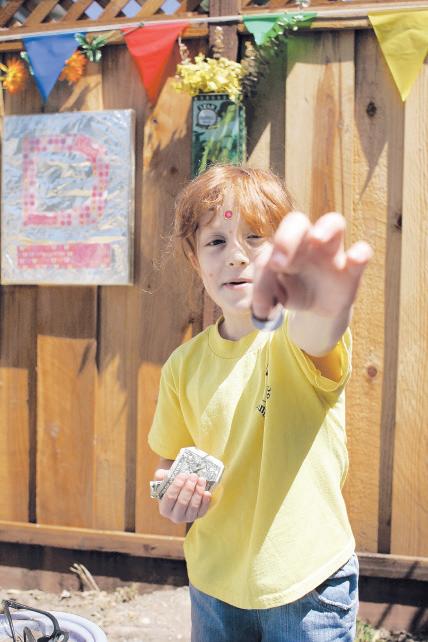
GOLDEN PARACHUTE
A MORE RELAXED PHELPS TRAINS FOR LAST OLYMPICS

Swim star won’t go after eight gold medals this time
World is his stage
BY ISABELLE MONAHAN Mosaic Staff Writer
Whether age 15 or 25, swimming at the Beijing games or the Santa Clara International Grand Prix, wearing swim caps or Orioles hats, Michael Phelps never fails to attract attention.
The crowd on a recent day at the George F. Haines Swim Center in Santa Clara included some of the country’s prominent Olympic writers from Sports Illustrated, USA Today and the Los Angeles Times. Phelps, in town for the South Bay’s annual competition, competed in his first Olympics at age 15. A decade later he is history’smostaccomplishedswimmerandonhis way to his fourth Summer Olympics in London next year.
BY CHRISTOPHE HAUBURSIN Mosaic Staff Writer
Regardless of backgrounds, S.F. performers are an integral part of city’s culture
Most days, Larry Johnson begins working behind the cover of eucalyptus branches, clad in a thick pair of Timberland boots, a pair of sunglasses resting on his reversed pinstripe Giants cap. His stubble-ridden face is glazed with a cool sweat, his torso hunched over a plastic crate. He takes a moment to shuffle the tools of his trade and rattles the coins in his white tip bucket.
And for once, he plans to enjoy his experiences in and out of the pool.
For once, Phelps, 25, doesn’t plan to try an
PHELPS // PAGE 16
He’s waiting. When the time is right he’ll thrust the branches forward with a grunt, startle unsuspecting passers-by, and snicker as their screams ring through the docks.
Larry is the son of David Johnson—the “World Famous Bushman,” as he’s more commonly known — and after 31 years of hard labor in what has become a family business of street-performance scares, the
PERFORMERS // PAGE 17
INSIDE Sportsmanship in the age of Facebook
PAGE 3
U.S. soccer legend
Caligiuri visits San Jose
PAGE 16
 FRIDAY // JUNE 24, 2011
HIGH SCHOOL URBAN JOURNALISM WORKSHOP MOSAICSANJOSE.TUMBLR.COM
KEVIN TSUKII // Mosaic Staff Photographer Michael Phelps swims the 100-meter butterfly at the Santa Clara International Grand Prix on June 17 in Santa Clara.
KEVIN TSUKII // Mosaic Staff Photographer Street-performer Larry Johnson waits on San Francisco sidewalk.
FRIDAY // JUNE 24, 2011
HIGH SCHOOL URBAN JOURNALISM WORKSHOP MOSAICSANJOSE.TUMBLR.COM
KEVIN TSUKII // Mosaic Staff Photographer Michael Phelps swims the 100-meter butterfly at the Santa Clara International Grand Prix on June 17 in Santa Clara.
KEVIN TSUKII // Mosaic Staff Photographer Street-performer Larry Johnson waits on San Francisco sidewalk.
AUTISM
PAGE 8 OPINION: FACEBOOK VS. FACE-TO-FACE — THE FACEOFF PAGE 13 LOCAL THEATER COMPANY // PAGE 8
KRYSTAL JARA // Mosaic Staff Photographer Katie Heathcote is involved in the Angels on Stage program, which helps autistic children deal with their disorder. “It makes me feel strong, I learned everyone will be strong and helpful,” Katie said, in her San Jose home.
ALYSSA MATSUHARA //
Five-foot-six Alyssa Jade Carbonel Matsuhara is the tallest girl at Mosaic. With long black hair and an impeccable sense of style,Matsuhara first introduced herself to her 15 classmates as “ambitious Alyssa.”

Ambitious is just what Alyssa is. A Gilroy native, Alyssa is poised to be Editor-in-Chief of her high school paper, The Free Press, as well as senior class secretary. Alyssa discovered journalism as a sixth-grader writing at a school newsletter. “My first story was of a break-in at the computer lab,” Alyssa said, laughing. “I doubt anybody read it, but it was my first-ever article.” Alyssa is an only child, but never felt that she missed out by not having siblings. She believes that her comfort with others and maturity comes from being surrounded by adults at a young age. Her writing talent, ease with interviewing,andcharismamake Alyssa the formidable journalist, while her pleasant attitude and calm demeanor make her a fabulous roommate.
- SOPHIE HO
BRIAN NGUYEN // Brian

Nguyen is not only beautiful — as he describes himself — he is also a well-rounded photographer with a lucky streak. Lucky because he was once almost crushed by a defensive lineman, Brian has hung off ledges, and bobbed through mosh-pits — all to get the perfect shot. A graduating senior and photo editor for Milpitas High School, Brian also enjoys hunting for hole-in-thewall restaurants and exploring San Francisco with his friends. Brian looks forward to starting at UC Davis in the fall and integrating himself with the newspaper staff there. In the future, Brian sees himself as a war photographer, so he can shine light on issues that people often prefer to leave in the dark.
KEVIN TSUKII
-
CHLOE TARRASCH // Chloe Tarrasch will be a junior next fall at Mountain View High. She plays for the Spartans tennis team and writes for the Oracle, her school newspaper.

Later in life, she hopes to travel to Vancouver, British Columbia,Washington, Oregon, Australia and England. With good reason too: She wants to be a foreign correspondent. Chloe is inspired by people who know that happiness in their lives is much more important than what they have.
CHRISTOPHE
- JASMIN RAMIREZ
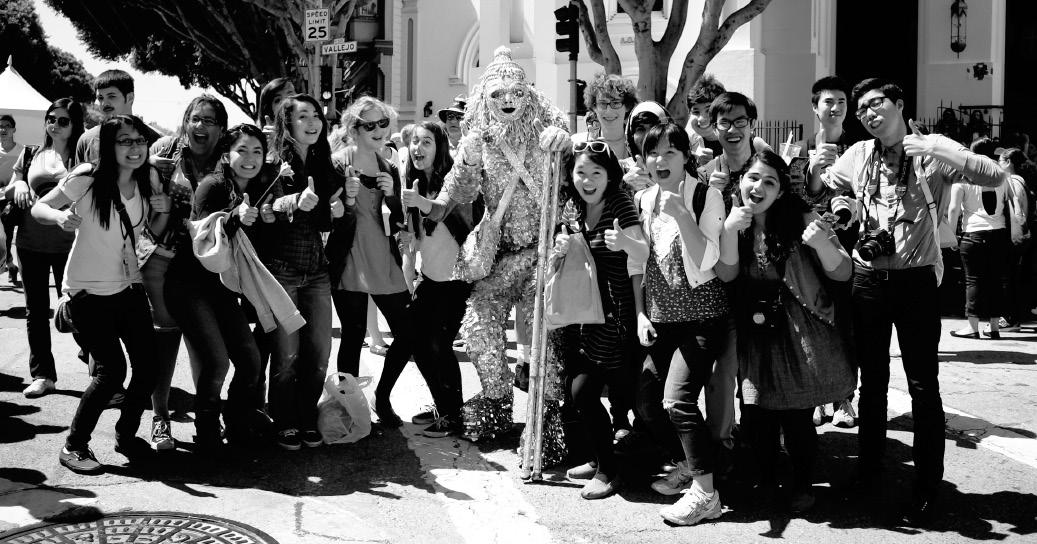
by the saying, “carpe diem,” living everyday to its fullest. -
IMRAN NAJAM
Elliott Almond
Sally Bachman
Chuck Carroll
Patty Hannon
Joanne Jacobs

JOSE DIAZ // Jose Diaz, 17, also known as Mosaic’s version of Michael Cera for his quiet, soft-spoken demeanor, is the ultimate Ellen Page fanboy. Unfortunately, Michael Cera’s character in “Juno” is in the way of Jose’s true love. Jose is stuck living life as the entertainment co-editor at Mount Pleasant High School. Going through his interview notebook, Jose enjoys sketching and doodling anime-related art. As a roommate, Diaz is shy and reserved but he is more than that. Jose is really a scary monster possessed by a demon that scared his roommate one night while watching “The Rite.”
IMRAN NAJAM
recognize a note by ear — runs diligently, and is involved in three writing publications at Lynbrook High School. Despite this intimidating evidence of her superior ambition, she is down to earth, fun to talk to, and her infectious laugh remains the only hint of her K-pop fangirl tendencies. She calls her twin sisteroftenand,thankfully,hasn’t exchanged places with her. Yet.
- LAURA COSGROVE
 - STEVE
- STEVE
VU

// Someone’s bound to be fairly interesting when their regular dress consists of a full-on dress suit top — vest, tie, and all — and plaid shorts with Circa skater shoes. Upcoming senior Imran Najam, a student at Silver Creek High School, makes every possible effort to make hischaracterand interests parallel the quirkiness of his apparel. But for him, standing out isn’t just a matter of character. It’s a lifestyle, one that influences everything from his musical interests in genres like the bass-heavy beats of Dubstep and the punk-brass fusion of Ska to his passion for the language and culture of Japan. When he isn’t busy working on his high school journalism staff, the“Asianwashed”Imran spends his days mastering juggling and long-boarding,andplayingvideo games. And even when teenage years have most of his peers struggling to fit in, Imran’s a deliberate rebel. And at that, he flourishes.
- CHRISTOPHE HAUBURSIN
ISABELLE MONAHAN
JASMIN RAMIREZ // This past year, sophomore Jasmin Ramirez played a unicorn, a werewolf, a vampire vixen, a sailor and a devil — all in one spoof of Dracula. Aside from performing in plays at Alisal High School in Salinas,Jasmin’s favorite class is English. To satisfy her hunger for literature, she shops at Barnes & Noble and avidly reads from her Nook, an eBook reader. Her favorite writers are J.K. Rowling and Darren Shan, author of the Cirque du Freak series. Despite her love of the English language, she would prefer to live in the Jalisco region of Mexico. “I’ve spent half of my life there,” Jasmin said, since she goes to Jalisco during every school break to visit relatives.
- CHLOE TARRASCH



is following her passion for photography at Mosaic. She is theincomingphotographyeditor at Cajon High School. As the middle child of three, she sings to a different tune than the rest of her siblings. With different values, styles, tastes, and opinions, Krystal is unique. The family is unified through music. She plays the violin and the ukulele. Never failing to have a smile on her face, Krystal consistently lifts the spirits of the people around her. She loves to eat and crack jokes. She looks forward to her upcoming year as editor-in-chief.
- NEHA SIMON
Kathy Miedema
Janice Rombeck
Levi Sumagaysay
Sylvia Ulloa
Oie Lian Yeh
EDITORIAL ASSISTANTS
Natalie Rich
Justine Tai
GUEST ADVISORS
Jim Gensheimer
Nhat Meyer
Karen de Sá
Patrick Tehan
Sean Webby
Peter F. Young
SPECIAL THANKS TO OUR FRIENDS
AT THE MERCURY NEWS
Publisher
Mac Tully
Executive Editor
David J. Butler
Managing Editor
Bert H. Robinson
Pressroom Manager
Stan McCallum
PressroomLayoutAdministrator
Carol Witt
Imaging Director
Mark Yamamoto
Digital Image Specialist
Rudy Knight
Makeup Manager
Gail Petty
IT Superuser
KEVIN TSUKII // Kevin Tsukii wants to be a photojournalist because photography is a medium with no language barriers. He believes that through photography, an idea can be conveyed simply and quickly. Kevin attends Monta Vista High School, and will be the photo editor of his school newspaper, El Estoque. With his little free time, Kevin likes to experience the outdoors, such as beaches, and parks. He also enjoys eating at Japanese ramen restaurants and watching movies with his friends. His favorite movie is “The Godfather.” The first one, of course. If he had the ability to bring someone back from the dead, it would be Andy Warhol or Keith Haring.
LAURA COSGROVE // Nicknamed the “mother” of this year’s Mosaic staff, Laura Cosgrove is calm and poised. She will be a senior at Milpitas High School and hopes to implement what she learned at Mosaic to improve the journalism program at her school. She loves journalism and strongly believes that unbiased journalism is essential to today’s society. One of Laura‘s hobbies is writing anonymous poems for different websites. Though she does not consider herself a natural athlete, she participates in cross-country, soccer and track. She also enjoys math and science, and she aspires to become a neuroscientist.
- JANE JUN
Kathryn McClelland
AT THE MONTEREY
COUNTY HERALD
Publisher
Gary Omernick
Executive Editor
Joe Livernois
Features Editor
Mike Hale


HAUBURSIN // With a foundation built on Belgium and Texas soil, “Clever” Christophe Haubursin, 16, is greatly influenced by his EuroAmerican heritage.
In fact, he travels to Belgium once a year to visit his dad’s side of the family and is fluent in both the French and Texan tongues. As a senior at Monta Vista High School, Christophe is one of the managing editors in his journalism class and a suave guitarist with the band “French and Indian War.”
However, in the Mosaic Summer Journalism Program, he lets his actions define him. Christophe has displayed himself as an excellent journalist, photographer, and caricature artist with sizable knowledge of comical internet memes. Influenced by his passion for writing, his dream job is being a photojournalist and staff writer of the prestigious Rolling Stone Magazine. But for now, he lives
// Not even the fear of water could stop Los Gatos’ Isabelle Monahan from having big dreams. The wouldbe astronaut plans to get a pilot license and scuba license when she turns 18 next year. Isabelle said that she overcomes her fear of water whenever scuba diving. “I don’t like thinking about it, but once I’m in, I enjoy it,” she said. Isabelle, who is Egyptian and Irish, is the middle child of three girls.
- BRIAN NGUYEN

NEHA SIMON // Rising Junior, Neha Simon, comes from an award-winning staff of over 50 students at Monta Vista High School in Cupertino. The staff publishes bothapaperand a website, where Neha will become an editor during the coming school year. At age 15, Neha has a passion for singing. She has traveled to singing festivals from Oregon, to Los Angeles, as well as locally. Neha looks forward to using her knowledge from Mosaic both during the coming year on her high school journalism staff and in the rest of her life.
- KRYSTAL JARA
AT SAN JOSE STATE Interim Director of Journalism
Professor Bob Rucker
Production Manager
Tim Burke
Business Office Manager
Pat Wallraven
Technology Specialist
Jessie Pickett
Administrative Analyst
Amy Freitag
THE MOSAIC WORKSHOP IS MADE POSSIBLE BY OUR GENEROUS
KIMBERLY IBANEZ //
 - KIMBERLY IBANEZ
- KIMBERLY IBANEZ

JANE JUN // If stranded on a desert island and given the choice of three animals to bring, Jane Jun would take three chickens — to eat. That ruthless practicality pushes Jane to exceed in nearly everything she does — especially at Mosaic, although at first she was uneasy about interviewing strangers. Jane is a straight-A student, has perfect pitch — she can
Upcoming senior Kimberly Ibañez of East Palo Alto refuses to be another statistic. She wants to go to school, earn an education, and have a better life. She came to Mosaic because she believes that journalism teaches skills that help in all aspects of life, including how to work under deadlines. Her favorite hobby is shopping and she loves anything to do with animals – except spiders. She wants to become a veterinarian and currently volunteers at animal shelters. If she doesn’t work with animals, Kimberly wants to earn a business degree and become CEO of a major company.
- ISABELLE MONAHAN
KRYSTAL JARA // “I don’t lie. I’m a lady!” is just one of Krystal Jara’s many jokes that gets the whole group chuckling. Krystal, who was born and grew up in San Bernardino,

SOPHIE HO // Sophie Hanh Ho, 17, was the shortest girl in Mosaic this year. Selfproclaimed “Short” Sophie lives in Los Altos and attends Mountain View High School. With her lovable personality,and savvy skills in the newsroom, she was chosen as editor-inchief of The Oracle for the upcoming school year. She has been involved in the journalism class since the start of high school. Her interest grew from her desire to be remembered.
“When your name is printed, it’s concrete – it’s something you can’t take away,” she said. Sophie, who has studied piano for 12 years, also contributes to the Freestyle Academy of Communication Arts & Technology at Mountain View High.
- ALYSSA MATSUHARA
SPONSORS
Castellano Family Foundation
CCNMA Latino Journalists of California
Dow Jones News Fund
Elaine Elkin
San Jose Mercury News
San Jose State University

STEVE VU // Steve Vu, 18, graduated this year from Silver Creek High School, where he was features editor for his newspaper.Steve was the best roommate ever. He’s a skinny guy with blackrimmed, prescription glasses and he loves cartoons. No matter how crappy Pokémon gets, Steve will keep watching. Steve’s hobbies include blogging, photography, sleeping and talking. He enjoys writing about trends and hyped thingsandhedrinksvariouskinds of tea. Every time he gets me to play Yu-Gi-Oh, he runs Ojamas. - JOSE DIAZ
FRIDAY // JUNE 24, 2011 // PAGE 2 MERCURYNEWS.COM/MOSAIC
MOSAIC 2011 // STAFF
JOE RODRIGUEZ //Mosaic Staff
// PROFESSIONAL STAFF
The 2011 Mosaic Workshop staff poses with a costumed man in North Beach.
MOSAIC 2011
EXECUTIVE DIRECTOR
EDITORS
Joe Rodriguez MANAGING
Marcos Antonio Cabrera Michael Cronk PHOTO EDITOR
Josie Lepe DESIGN DIRECTOR
EDITORS
Janet Kim Paik COPY

Sportsmanship in the age of Facebook
Los Gatos, Saratoga high schools get lesson in trash-talking
BY ALYSSA MATSUHARA
M osaic Staff Writer
Good sportsmanship was put to the test last fall when the longtime rivalry between Los Gatos and Saratoga high schools took an ugly turn on Facebook.
It was tested again this spring with the beating of a Giants fan, harsh criticism of Lebron James after he failed to lead the Miami Heat to an NBA title, and the riots in Vancouver after the Canucks lost in the Stanley Cup finals.
These recent incidents from youth to pro sports, from athletes to fans, have left some asking: Where has good sportsmanship gone?
“It’s about our play, not our talk,” said Sam Piraro, San Jose State University’s baseball coach of 24 seasons.
But talk is what escalated the three-decade-old rivalry between Los Gatos and Saratoga highs in October.
It started innocently enough when Saratoga’s then-seniors Tim Lycurgus and Kevin Darchuk created a Facebook group to energize students and players before the upcoming football game against Los Gatos.
The rivalry that Lycurgus had
described as “dying out” before the game only intensified after the page went up.
It had been 27 years since the Falcons defeated Los Gatos in football.
“Los Gatos had gotten so used to beating us that it really wasn’t much of a competition so I know that some kids at Saratoga were calling for the rivalry to end,” said Lycurgus, who plans to attend Brown University in the fall.
The Facebook page was born out of Code Red, a club started by Lycurgus in his sophomore year to get more people interested in attending school sporting events.
Lycurgus said he created the Facebook page because the club wanted more people to go the game, and because the Falcons had a shot at winning for once.
“Los Gatos kids were invited and the trash talk kind of just built up slowly,” Lycurgus said.
Some of the derogatory comments referred to Saratoga’s large Asian population. Some posts had as many as 80 comments.
“Trash talk before a big rivalry game is going to get pretty dirty so I didn’t think it was too big of

a deal,” Lycurgus, 18, said. “For the most part I thought it was just part of sports.”
Atbothadministrations’requests, the Facebook page was deleted and an undisclosed number of Los Gatos starters who had contributed commentsweresuspendedforpart of the game. Saratoga went on to win 21-17.
“The outcome of the game was sort of poetic justice,” Saratoga Principal Jeff Anderson said.
Some suggest the taunting on the Facebook page is a byproduct of society’s win-at-all-cost mentality.
“Sports are a world where winning supersedes all other considerations, where moral
Surfer to Teens: Think Twice
Champion uses speeches, books to spread hard-won wisdom
BY CHLOE TARRASCH Mosaic Staff Writer
His eyes glow and his cheeks widen as a grin appears on his face.
ShaunTomson radiates positive waves of energy as he tells stories about his two children. As he describes the times he spent surfing with his late son Mathew, the audience is captivated. And when he discusses his younger son Luke, his eyes shine with happiness.
Tomson, a world-renowned surfing champion, grew up in Durban, South Africa and went on to win the world title in 1977, the pinnacle year of his career. After retiring from surfing and creating two successful apparel companies, Tomson wrote “Surfer’s Code: 12 Simple Lessons for Riding Through Life,” with Patrick Moser. Recently, Tomson has been traveling to surfing communitiestogivepresentationsabout his book and his life as a surfer and father. He spoke at O’Neill’s surf shop in Capitola on June 17.
The death of his son five years
ago changed Tomson’s views on life, and he decided to become more in touch with today’s youth. While he emerged from that tragedy a stronger person, Tomson’s words of wisdom and life stories resonate with young people.
His core mantra is simple: Think twice.
“If a friend of yours has been drinking, you’ve been invited to a party, someone offers you dope, or someone says ‘Let’s play a dangerous game’— whatever it is, just think twice,” he said.
Tomsonbelievesthosetwowords can have an enormous impact on anyone’s life, and especially teenagers’ lives. He realized this after Mathewdiedwhileallegedlyplaying the “choking game,” in which people choke each other to get a “high” without drugs or alcohol.
“My wife [Carla] and I have actually set up a little foundation that we’re starting to develop called ‘Think Twice’that’s just really aimed at educating teenagers about the repercussions of rash actions,” said Tomson. “Life is very, very fragile. And decisions that you make in a split second can have a huge impact on your life, the lives of your family and the lives of your friends around you.”
But that’s not the only advice Tomson imparts to young people.
He wrote his book to share the lessons he’s learned through surfing to everyone around the world, with each lesson beginning with the words “I will.”
“ ‘I will’ denotes commitment. I think if you want to make any change in your life, if you want to make any progress in your life, it has to start with ‘I will.’ Not ‘I’m thinking about it, not ‘I’m going to, [not] ‘I might,’ ‘I will.’ ”
Through this philosophy, he stresses that “everyone is going to take hard knocks in life and it’s important to persevere ... another wave will always come through and help you make change.”
While striving to become a professional surfer with the “I will” attitude, Tomson committed to his passion and eventually reached professional status – a trajectory that was unimaginable when he began surfing as an amateur. “I just really followed my passion, and it’s a lot easier to work hard –it’s a lot easier to practice, it’s a lot easier to focus – if you’re doing something that you really love.”
Tomson’s passion and skill propelled him to the crest of the surfing world, but it was his hard work and perseverance that kept him at the top.
“I had to help build the surfing industry. I had to turn the reputa-
“
As much as we can teach them to field ground balls, it’s about playing and acting the right way – it’s about the way you treat people.”
—GaryDavenport,SanJoseGiantsbattingcoach
values have become confused with the bottom line,” famous sports sociologist D. Stanley Eitzen said in a speech last year at San Angelo State University. “In sports, we demand winners.”
The budding pros with the Class A San Jose Giants understand the importance of winning. But they also know being a professional athlete is more than the numbers on the scoreboard.
“As much as we can teach them to field ground balls, it’s about playing and acting the right way – it’s about the way you treat people,” Giants batting coach Gary Davenport said.
“Respecting your opponent, I think that’s what good sportsmanship is,” second baseman Ryan Cavan added. “It goes a long way both on and off the field.”
For many, sportsmanship is teachinglessonsthroughthegames. Piraro, the San Jose State coach, preaches emotional stability.
“Keep control of your emotions; keep focused on the goal,” Piraro tells his players.
Of the taunting that is part of college baseball culture, Piraro said, “We try not to engage verbally with the other team. It’s not something we do at San Jose State.”
Jim Mollerus, division director of Campbell Little League, said strong values start with youngsters.
“At the youngest age, emphasis isn’t on winning – it’s on fun,” Mollerus said. “We don’t even keep score.”
The only rules on his team are “to respect the game, umpires, players, and coaches.”
Respect is hard to come by between Los Gatos and Saratoga. One Los Gatos senior said the coaches “don’t encourage the rivalry; they just want to win everything more.”
The student asked not to be identified because school officials told students not to discuss the incident. He and other students say the rivalry will remain as intense as ever when the school year begins in the fall.
“Now that the streak is over, Los Gatos actually needs to look for revenge next year,” Lycurgus said.
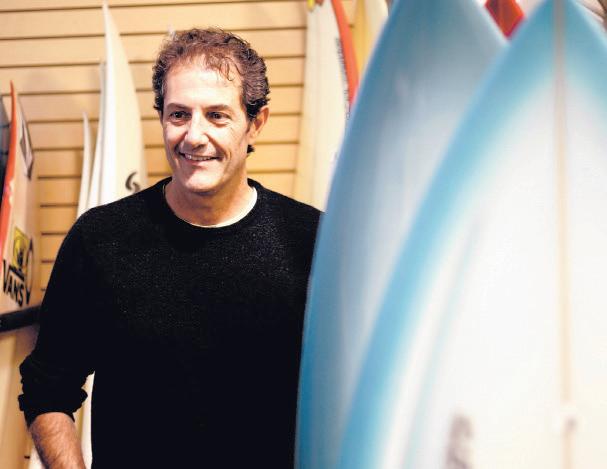
tion of the surfers into something that would be marketable,” he said. “We were fortunate enough to make it all happen.” Tomson uses his experience, and surfing jargon, to convey his ideas. Youth need to carry on his philosophies because, he said, “Old people won’t be around for that much longer,”
“A lot of what I learned about life from surfing (is) just totally applicable to business,” added Tomson, who has produced a picture book entitled Surf Creatures and a 3-D movie titled “Tubed,” meant for children and young adults,
respectively.
“The notions of perseverance, of commitment —‘never turning your back on the ocean’ — staying passionate about what you love, paddling back out in the face of adversity; “I’m hoping all the projects I’ve done, like the other movies I’ve made and other books I’ve done, will inspire people. That’s really sort of a big factor of my life, I just love doing that,” he said.
“It’sperseverance,commitment, optimism – those all three. Those attributes are all super important for youth, for everyone.”
FRIDAY // JUNE 24, 2011 // PAGE 3 MERCURYNEWS.COM/MOSAIC
SPORTS
BRIAN NGUYEN //Mosaic Staff Photographs
The Modesto Nuts goof around before their game against the San Jose Giants at the Municipal Stadium in San Jose.
Ryan Cavan sits in the dugout before the game.
KEVIN TSUKII // Mosaic Staff Photographer
Surf legend Shaun Tomson poses before speaking with a crowd of fans at the O’Neill surf shop in Capitola.
Stereotypes: Sometimes it’s hard to know whom your dealing with
Atmyniece’sfirstbirthdayabout a year ago, a friend of the family asked if she was my baby. My baby?Imean,whywouldsomeone think I, a 16-year-old girl, would have a baby? I couldn’t believe this lady; a Mexican woman was telling me she thought I was a knockedup teen. To be fair, she didn’t know me very well, but it got me thinking.
I was going to be a sophomore that year at Alisal High School in Salinas. I tried to figure out what I was doing in my life to make her ask me that.
banger. I could take him to meet my parents if we were on a date and they would like him. If I took a gangbanger home, or was just seen talking to one, I would be in trouble. It gets me mad to know he would fuel the stereotype when he’s such a nice guy.
IN MY OPINION

I have good grades, I’m in my school’s drama club, and this summer I was accepted into a competitivejournalismworkshop.
It’s a horrible stereotype when it comes to Mexican-American teenage girls, but one that sadly will not go away. Stereotypes for Mexican-American teens are pretty bad: Girls get knocked up; guys are all gangbangers.
My friend Andy is 15 and last year he walked into a restaurant in Salinas, wearing purple-grayblue shorts, black Converse shoes and a blue T-shirt. He sat down and heard an elderly white woman tell her companions, “careful with this little gangbanger,” while putting away her possessions. Andy felt like he was being judged, probably because he was speaking Spanish.
It’s sad to say, but he did look like a gangbanger because in my hometown, blue is one of the gang colors. But Andy’s pants weren’t so low on his hips that his butt was showing, and his shirt wasn’t a double XL. His clothes fit him. It was the color that did it. He was being a tad idiotic. Andy knows blue is one of the gang colors so he shouldn’t have been wearing it.
This is a fine line here. People know gangbangers wear the color red or blue, depending on what gang they claim, but it doesn’t mean that all kids who wear those colors claim a gang.
He is nothing like a gang-
He’s involved in basketball and wrestling, and is in tutoring after school. He tries to keep out of trouble, and he doesn’thavegangbanger friends. I know Andy wasn’t doingthisbutthestereotypes getevenworsewhenthere are people who dress like gangbangersjustbecause they think its “cool.” It isn’t. I see guys wearing double XL T-shirts; with jeans so baggy they go past their butts, in sneakers so old they’re coming apart. These guys aren’t bad. They just dress like idiots. Then there is thefinelinebetweengangbangers and those who dress in the hip-hop style. It’s difficult to see the difference in the styles, so I can see how someone can confuse them.
It’s ridiculous that people who don’t know us are stereotyping my friends and me. Schools could do a better job of helping kids understand stereotypes as well. I went to a middle school where we had to wear a uniform. Teachers there showed us how people used stereotypes to define us. They told the guys, “By wearing plain white shirts, you are saying you’re a gangbanger.”
I personally feel that getting to know a person is the best way to stop these stupid stereotypes. It doesn’t have to be some epic life-changing conversation. Get to know people before you brand them.
If the friend of my family had one simple conversation with me, gotten to know me, she wouldn’t have thought my niece was my kid. I could have told her what I want to do when I get out of school, how I want to spend the rest of my life cooking in my own restaurant. She didn’t, though, and made an assumption far from the truth.
It ain’t easy being beige
During my first Mosaic editorial meeting, I was asked to share something that most people wouldn’t know about me.
My response was “Hi, my name is Jose Diaz. I may look white, but I’m actually Mexican.”
Not to my surprise everyone went on to say, “Really?” like they usually do. And here I am, again, explaining that, “I’m not half Irish or something.
Both my parents are full-blown Mexicans.”
I live in San Jose, Calif., in a predominately Hispanic community.
Amongst the other brown kids, I stand out.
I admit I didn’t comply with the stereotypes of what a Mexican was supposed to be: I hated soccer, I didn’t eat meat, I listened to indie music and renounced my Catholic faith.
Sue me for not conforming, but this widely recognized idea of a “Mexican” seems pretty offensive to me.

My skin just happens to be lighter than that of most Latinos. I guess I’d be better classified as Mexican-American or Chicano. Take your pick. I don’t think anyone I’ve ever met has guessed I was Mexican. Most recently, I was classified as Palestinian (I suppose that’s better).
There is a stereotype as to what classifies you as a Mexican. First and foremost is skin color. I’m not the darkest crayon in the box, so most people never would have guessed that this white guy was Mexican.
Next is the accent. I lived all my life in California and before I entered kindergarten I was fluent in both English and Spanish.
Although Spanish was my first language, I became more advanced in English, so I didn’t have the great ability to roll my “R’s”
So basically I speak perfect English and iffy Spanish.
The Mexican community labeled me as whitewashed because I couldn’t fulfill the requirements of being Mexican.
I felt ostracized, unable to associate with either Mexican or white folks.

Residents rally against Cupertino cement company
BY KIMBERLY IBANEZ Mosaic Staff Writer
About 60 people from No Toxic Air marched to the gates of Lehigh Southwest Cement Co. in Cupertino on June 18.
They gathered to protest the company’s refusal to allow access to a public road behind the quarry.
No Toxic Air is a Silicon Valleybased nonprofit group formed earlier this year. It aims to bring attention to Bay Area health and environmental concerns.
The cement company dispute underscores how local residents can fight back against corporate America when they witness issues in their back yard.
Protesters felt the issue doesn’t receive enough attention, so they came out to be heard.
At about 10 a.m. protesters grouped together and started walking up the road.
Chants of “Give us our road back,” “No toxic air,” “Keep public roads public” were loudly repeated as truck drivers went up and down the hill.
I wasn’t ashamed of being Mexican like most people thought. I was ashamed to be represented as a lazy, burrito-eating, uneducated border-hopper.
Despite my lack of physical traits, I never condemned anything that should be considered great about being Mexican.
It’s a rich, colorful and fascinating culture.
I read books and watch films in Spanish, and listen to some Latin music, so I’m well involved with my culture.
But this separate image of what a Mexican is supposed be causes many other Mexicans to feel like they should behave a certain way - they must aim to be soccer fans, speak slang, and perform terribly at school.
Maybe I’m not the greatest example of what it means to be a “good” Mexican. No one decides that.
But who decided that because we are Mexican, we are destined to be janitors, maids or farm workers?
Who decided just because my skin is white, I’m not a real Mexican.
This stereotype of the appropriate Mexican should be wiped clean from everyone’s mind. Until then I’m going to refrain from tanning.
I’m going to become super rich and I will continue being compared to Canadian actor Michael Cera — my own way of fighting the Mexican label.
Sportingsunglassesandsunhats, and accompanied by their dogs, residents said they were upset by what the company has done to their city as well as their lives. They worry about air pollution, mercury in the water and the company’s blocking access to a public road.
Cupertino City Councilman Berry Chang led the group with a megaphone, leading the chants along with another protester.
“I feel that I need to do my part to protect the environment,” said Gary Ettinger, a 10-year Cupertino resident.
The protesters held picket signs that read “Save Our Air,” “No New Pit,” “Lehigh Comply or Goodbye,” and “Lehigh off AB3098.”
According to Lehigh Southwest CementPermanentePlant’swebsite, the company has recently installed an Activated Carbon Injection system that it says cuts down mercury emissions by 90 percent.
“We take our responsibility in the community very seriously,” plant manager Henrik Wesseling said recently, “And that’s why this
project has been my top priority since my first day on the job.”
Nandica Donthi and Maya Sranth, Chang’s interns, were unaware of the situation before working with Chang. They said they came out in support when they found out.
Some, such as Cathy Helgerson, have been aware of the situation for years.
“This is a nightmare,” the 20year Cupertino resident said.
She studied data about the factory, and contacted the Environmental Protection Agency and Santa Clara County officials.
Carrying a protest sign in one hand and his dog on a leash in the other, G. William Walster said many neighbors weren’t aware of the problems. “They do a good job of hiding it,” he said of the cement company.
Protesters said they would continue to stand up until the situation receives more attention and something is done about the company’s compliance with the law and its relationship to the community.
Janitors protest plan to require electronic job eligibility system
BY IMRAN NAJAM Mosaic Staff Writer
Justice for Janitors, angered by pending federal legislation that would require employers to verify the immigration status of their workers via the Internet, protested in front of the San Jose federal building on June 20.
“We set this up last Friday, and this is just one among many rallies,” said Cecille Isidro, spokeswoman for the United Service Workers West. “We will do whatever it takes to stop this bill.”
The bill, “Legal Workforce Act” (H.R. 2164), introduced by Rep. LamarSmith,R-Texas,wouldmandate the use of E-Verify for employers.
Under the proposed law, Social Security numbers and immigrant identificationnumbersofnewhires are checked against Social Security Administration and Department of Homeland Security databases to determine work eligibility.
Smith says the legislation is intended to help ensure that jobs are reserved for citizens and legal workers.
However, opponents claim that the pending bill “would further threaten our economic recovery by mandating that all employers rely on an error-ridden government database that does not accurately verify worker eligibility.”
Protesters marched during lunchtime in front of the federal

FRIDAY // JUNE 24, 2011 // PAGE 4 MERCURYNEWS.COM/MOSAIC
KEVIN TSUKII // Mosaic Staff Photographer
Protesters chant outside Lehigh Cement Co.’s Permanente plant in Cupertino.
building at Second and East
Carlos streets, carrying signs that read Justice for Janitors on one side, and Fuera de nuestros barrios, (Keep it out of our neighborhood) and Que paso con el hope? (Where is the hope?) Braulia Delgado, a janitor, said that the protest was to prevent immigrants from losing their jobs now, and from being affected in the future. “It is my hope that President Obama will hear us and prevent this [bill] from happening.” As of June 14, the bill was referred to several committees in the Congress. The State Legislators for Legal Immigration (SLLI) are also opposed to the bill.
San
NGUYEN // Mosaic Staff Photographer
Oringer protests an immigration reform bill introduced by Rep. Lamar Smith in front of the federal building in San Jose.
BRIAN
Jason
Jose Diaz
IN MY OPINION
Jasmin Ramirez
Fire devastates SJSU frat house
Five-alarm blaze leaves 30 students, 5 chinchillas homeless
BY LAURA COSGROVE, JANE JUN AND ISABELLE MONAHAN
Mosaic Staff Writers
Thirty San Jose State students were left homeless June 21 after an early morning fire destroyed the Kappa Sigma fraternity house next to campus.
No student was injured in the blaze at 168 Eleventh St. that began at 3:21 a.m., according to authorities. But it left school officials scrambling to help the students find temporary shelter.
“We’re going to do our best to stay together,” Zach Brouillard said as he comforted fraternity brother Shane Peters.“That’s what we do.”
The students and five pet chinchillas were evacuated safely in an incident that took a toll on the fraternity members. Despite losing personal items, the students grieved most for the loss of cherished memories.
“We lost history,” said Peters, a 19-year-old sophomore. “There used to be these murals on the top floor that everyone would add to each year, and now they’re gone.”
Firefighters found heavy plumes of smoke in the back of the 25-bedroom home when responding, said Capt. Mary Gutierrez of the San Jose Fire Department.
The origin of the fire is under investigation. Authorities believe the blaze started in the attic of the two-storyVictorian-style building that became a fraternity house for San Jose State in the early 1990s.
It took firefighters three hours to put out the blaze at the house. Gutierrez estimated damage totaling $1.7 million.
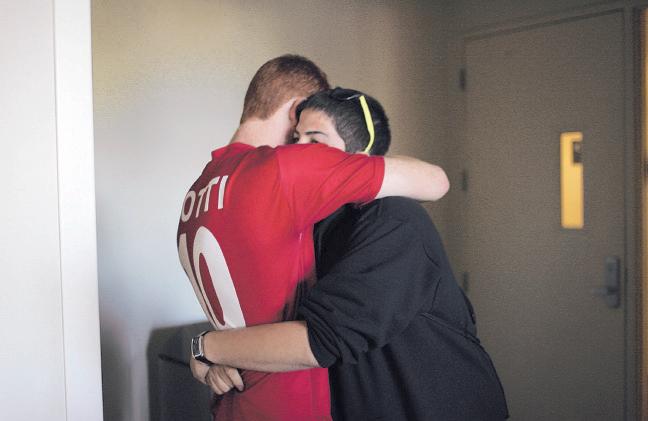
“We lost history. There used to be these murals on the top floor that everyone would add to each year, and now they’re gone.”
— Shane Peters, sophomore
Neighboring fraternities and sororities also were eager to lend a hand and emotional support, said Morikot En of neighboring Delta Zeta.
The San Jose Police Department declared the incident a five-alarm fire. Neighboring cities sent firefighters to the scene as 90 firefighters responded in total.
An unidentified firefighter suffered minor burns on his hand, Gutierrez said.
The American Red Cross provided the victims with clothes and other household necessities, Gutierrez said.
Photographs from past fraternities were salvaged from the wreckage, but most of the students’ belongings were destroyed. “Firefighters have been pulling out” some photos, “but with respect to personal belongings, it’s a total loss,” Gutierrez said.
“They are like brothers to us,” En said. “It’s hard to see them go through that and to think, ‘What if that happened to us?’ We’re offering housing and clothes to the students.”
The University Housing Conference Services distributed boxershorts,shampoo,soap,towels, and bags to the students as they discussedtheirlivingarrangements. The students planned to stay in
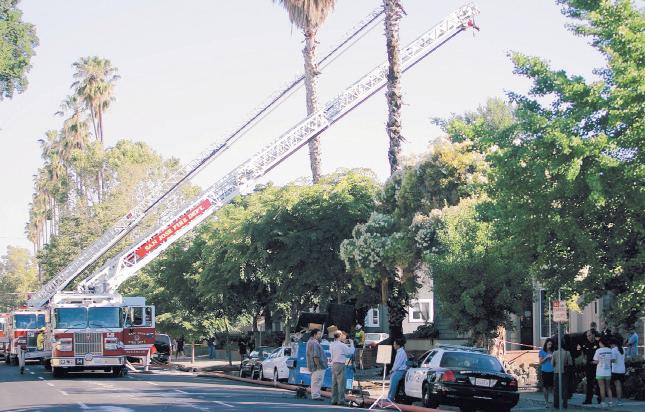
other fraternity houses, rent rooms, live in on-campus housing or move home, Peters said. Despite the shock, Peters joked with his brothers as they walked by
the freshman orientation booths.
“No one has any excuse to not help Brad rush today,” he said with a laugh. “We partied so hard the roof fell down.”
Somos ayudando: United Way, Somos Mayfair join together for Day of Action at East Side schools
BY JOSE DIAZ Mosaic Staff Writer
One recent broiling day, more than 200 volunteers came to East San Jose and worked to improve community conditions during Somos Mayfair’s Day of Action.
Home to around 20,000 residents, Mayfair is a community made up of primarily second-and third-generation Latin and Asian immigrants.
Event organizers said the annual Day of Action, held June 21, was an opportunity for volunteers from the community and various corporations to come together and create lasting change with regard to early education.
The areas that were spruced up included Cesar Chavez Elementary School, Mayfair Park, Mathson Middle School and Kidango day care center. Each place was within walking distance of where volunteers gathered.
“This is so important. … What we’re trying to do is make Silicon Valley a better place and to do that you have to go everywhere,” said Carol Leigh Hutton, president and chief executive officer of United Way Silicon Valley.
This year, community outreach group Somos Mayfair formed a partnership with United Way Silicon Valley. The United Way hosts Day of Action events nationwide.
“We know (Somos Mayfair) is a verygoodagencyandwedecidedto reach out and help,” Hutton said. “It was a perfect match with us.”
Mayfair was selected for this year’s event to combat some of
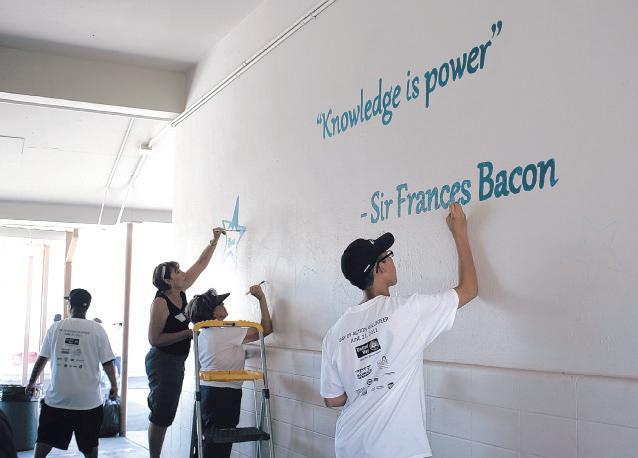
the challenges of the community, such as the education gap. Hutton said that the community is made up of many English learners. She said students that reach the third grade unable to read or write at grade level are at risk of dropping out of school. If the student comes from poverty then the chances are doubled.
In East San Jose, child poverty rates are 22.1 percent, according a recent report released by
the United Way and one of its research partners.
Volunteersincludedcommunity members, Somos Mayfair members, United Way staff, teachers, and associates of the Mayfair neighborhood schools. Corporate sponsors sent representatives as well, including employees of Best Buy, Target, IBM and Sony. Community members were very involved in the day’s events.
“This is my school … I wouldn’t miss it for the world,”
said volunteer Janae Stayton, who is a coach from the nonprofit organization Playworks, which provides safe, healthy and inclusive play for kids during recess and throughout the school day. Stayton is stationed at Cesar Chavez Elementary School.
At Chavez Elementary, volunteers painted “power slogans” on different walls of the school giving out positive messages to students.
One slogan read “Never give
up.”Other quotes included athlete Bo Jackson’s “Set your goals high and don’t stop ’til you get there,” and Sir Frances Bacon famous quote, “Knowledge is power.”
“The purpose of this is getting kids while they’re still young to think learning is fun,” said Jane Le Fevre of United Way.
Volunteers painted stars on the floors of the school hallways, makingeachdirectionthestudents take a colorful path.
On the playground blacktop, volunteers painted universities logos from around California, in an effort to get students more interested in higher education.
At Mayfair Park, next door to the Mayfair Community Center, volunteers constructed a Born Learning Trail, a permanent trail that focuses on early childhood development.
“It’s even more important that people give time and effort to move the community effort,” said Larry Olmstead, vice president of organization development for United Way Silicon Valley.
The trail has shapes, letters and numbers painted on it and serves as an interactive way for children to develop necessary skills for school.
At Mathson Middle School, volunteers also organized and beautified the faculty room.
At Kidango, a child care center, they repainted benches and planter boxes.
“We always create projects that could have some lasting impact,” said Hutton.
FRIDAY // JUNE 24, 2011 // PAGE 5 MERCURYNEWS.COM/MOSAIC
KEVIN TSUKII //Mosaic Staff Photographer Firefighters, police and the media converge on the Kappa Sigma fraternity house on 11th Street in San Jose after the fire.
BRIAN NGUYEN //Mosaic Staff Photographer (left-right) Zach Brouillard, left, hugs fellow fraternity member Shane Peters outside the recreation center meeting room as their housing fate is being determined.
KRYSTAL JARA //Mosaic Staff Photographer Volunteers gather to support the Day of Action at Cesar Chavez Elementary School.
It’s hip to pedal and promote merchandise
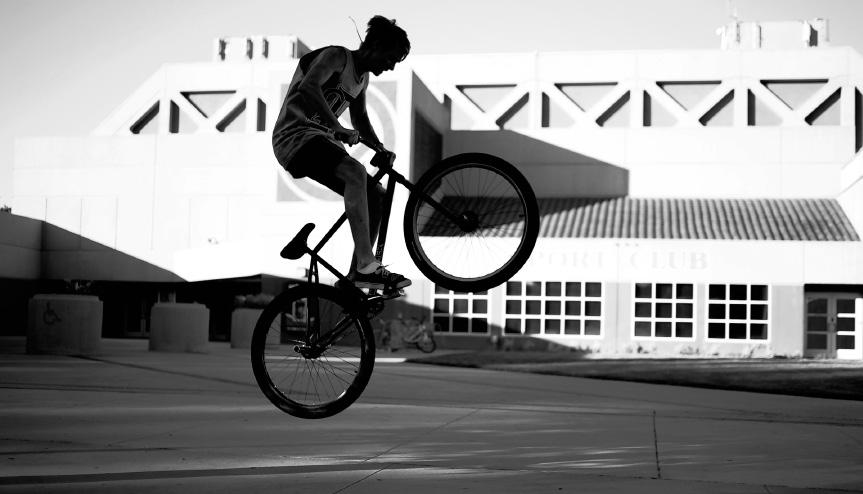 BY IMRAN NAJAM Mosaic Staff Writer
BY IMRAN NAJAM Mosaic Staff Writer
Only the greatest “fixie pixies” have “swag.”
“You want to see some real swag?
Look at those two,” said fixed-gear bike rider “A. Rod,” pointing to fellow fixie pixies Matt Reyes (aka “Slum”) and Scott Horton, who were performing tricks on the San Jose State University campus before a ride downtown.
Swag, to some, is just promotional merchandise. Or, as A. Rod defines it, “Stuff we all get.” To others it’s more about being popular, a social status booster.
And, the concept of swag is being sold to an “in-crowd” of teens and young adults—hyping such trends as riding fixed-gear bicycles, listening to electronic music, showing off the newest innovations from Apple Computer and wearing the latest-
style threads. Fixies are named for the toothed cog directly connected to the back wheel of the bike, the “fixed gear.” This allows no free wheel movement, meaning the rider can’t coast and must constantly power the pedals.
Although swag may be the selling point of fixies now, the fad started from the hipster subculture movement of renovating antiques. It is often described as“new age fun with a vintage feel.”
“Hipster has nothing to do with fixed gear, it’s now more of the style of clothing that you wear and things you do,” said Sebastian Sanchez, as he set out on a group ride hosted by the San Jose Fixed Gear bike group. “Fixed gears have just evolved to be above that stuff.”
When it comes to hyped trends like fixies, business goes along for the ride.
“More bikes is better,’’ said Bill
‘Fixie pixies’ hype ‘ gaws ’
NGUYEN
Tran, manager of iMiNUSD Fixed Gear Boutique in San Jose. Tran said that hypes also bring local communities together.“People park as far [away] as our shop for downtown events like Christmas in the Park, and when they see our shop, they get interested, look around, and then go out to eat. It’s great.”
On a global scale, large retail companies are competing to manufacture and sell unusual bike parts, outsourcing them to every corner of the world.
“My sponsors do all design work locally, and outsource part making to Taiwan.” says Slum. “This aspect has significantly reduced the prices of bikes: from $3,000 to now only $800.”
All hypes, including the fixie fad, have the effect of convincing consumers that they can’t be swag or cool without hyped products. Labels
are created for fixed gear bikers such as fixie pixie and fixiecrat. Other names are given to hype followers: poser, hype beast, swagster. Terms such as “bandwagoner” (those who acquire hyped objects after the hype is well under way) are used to deride hype devotees by people who choose not to get hyped up.
The fixie hype has had a rippling effect around the world. Fixie fad groups that have been created include: AlohaFixed (Hawaii), C.R.A.N.K. Mob (Los Angeles), and People’s Bike (Shanghai). These groups often host or ride in gatherings, like San Jose’s Bike Party.
However, the popularity of fixed gear bikes seems to be cresting. According to Slum, “The hype factor has diminished now.”
It appears that all but the most dedicated fixie pixies are ready to move on to the next latest and greatest trend.
Taking back the streets
Police and community bring positive change to EPA
BY KIMBERLY IBANEZ Mosaic Staff Writer
In 1992, East Palo Alto experienced 42 homicides, underlining its reputation as the “murder capital of the United States.”
But over the years the city has shed that image, fueling optimism and pride in a place once considered the stepchild of Silicon Valley.
“East Palo Alto is no different than any other community except that it has a violent history,” Mayor Carlos Romero said recently.
That violent history collided with the present recently with the fatal shooting of a 3-month-old that has fed old perceptions about a place many Bay Area residents really don’t know.
The shooting was a setback for the city’s efforts to make it a place of tranquility and safety.
The fatality, thought to be a result of a gang fight, has led police Chief Ronald Davis to announce a crackdown against the Nortenos and Surenos street gangs. Davis said he holds them responsible for the child’s death.
Despite the recent shooting, however, many who live and work in East Palo Alto say much has improved since the early 1990s.
“There’s a positive change you don’t hear about,” said Stephen
Ashford, a rapper who teaches at East Palo Alto Charter School.
As a young boy, Ashford was not allowed to leave the yard because his grandmother thought it was too dangerous to wander off. He said that many of his neighbors felt the same as his grandmother. At the time, many parents were concerned about gangs.
But those attitudes changed over time, especially since the arrival of Davis in 2005.
“When he came, everything calmed down,” Ashford said.
In the past few years, police have worked to stop gang violence, including dismantling the notorious Taliban gang. Davis also holds regular “Chats with the Chief” to build trust with the community.
Now those who used to keep their kids locked in the yard can walk the streets without fearing gun battles or drug dealers.
Since 2005, East Palo Alto’s homicide rate has dropped from 15 to two, according to a department crime statistical report. The decrease is better than the national average.
Romero said the figure is good, “but it’s not good enough.”
The mayor said improved relations between the police and the community has helped officers keep the city safe. Two suspects
“
Hipster has nothing to do with fixed gear
… Fixed gears have just evolved to be above that stuff.”
— Sebastian Sanchez, fixedgearbikerider

in the baby’s death were apprehended within 24 hours of the shooting as a result of community cooperation. Such community involvement takes many forms.
For example, Ashford has played a role by using music to reach children. Since 2005, Ashford has composed CDs to promote education by telling kids to stay in school.
“I’m supposed to be a role model,” he said of why he does it.
Ashford figured he could reach more kids by recording rap songs
a style they enjoy. Individuals such as Ashford aren’t the only ones that have tried to make a difference. Schools such as EPA Charter, Eastside College Prep, and Phoenix Academy charter and private schools located in the city have put neighborhood kids on the college track.
“It starts at home and then school,” Ashford said of what it takes to transform a community. It also starts with attracting new business to the area, where a popular shopping center with an IKEA, Home Depot, and Mi
Pueblo grocery store draw shoppers from the Peninsula.
East Palo Alto also completed a project along University Avenue with the addition of a Four Seasons Hotel. Last year, the city received $1.4 million in hotel tax from the project.
East Palo Alto officials have more plans for the future.
A month ago, the city received a grant to build a pedestrian bridge connecting the east and west sides of Highway 101.
It’s just another sign of how far East Palo Alto has come.
FRIDAY // JUNE 24, 2011 // PAGE 6 MERCURYNEWS.COM/MOSAIC
KRYSTAL JARA //Mosaic Staff Photographer
Stephen Ashford, both teacher and rapper, stands in front of a mural at East Palo Alto Charter School.
BRIAN
//Mosaic Staff Photographer
Matt Reyes performs a trick before a San Jose Fixed Gear weekly bike ride at the fountain at San Jose State University in San Jose.
Egypt uprising inspires women in Arab world to change gender views
BY ISABELLE MONAHAN Mosaic Staff Writer
Rasha El Dessouka watches her two children while patiently waiting for attitudes to change.
Like many Egyptian women who supported the protests that led to the downfall of President Hosni Mubarak, her struggles are not over. Although they played an important role in the Arab Spring revolution, they now face another challenge:deeplyentrenchedviews about women’s place in society.
“Definitely, extreme Islamists look down on women,” said Dessouka, who often holds gatherings at her Los Altos home to promote nonprofit organizations such as those helping physically injured victims of the revolution. “But a much more frustrating truth is that so does the general public. The new constitution does not say that women cannot run for presidential office. But I doubt there will be one in the next 20 years.”
BeforeimmigratingtotheUnited States in 1997, Dessouka earned a degree in economics and a minor in political science from the American University of Cairo. She worked for four years as a meeting planner for a marketing company.
“The work was very fun,” she said. “I loved selling Egypt to different companies, and I met a lot of interesting people through my work.”
Dessouka, 40, eventually left her job to prepare for the birth of her first child. Her husband, who graduated with a degree in ophthalmology, was able to support the family financially. Her switch to domestic life seemed reasonable.
“I had worked for many years, and I was ready to live a more traditional lifestyle,” Dessouka said. “But women in Egypt that continue to work still have to look after their children or have to have their mothers look after their children.”
In a region undergoing great change,genderinequityremainsas prevalent as the Sahara Desert heat.
A 2008 survey conducted by the Egyptian Center for Women’s Rights found that 83 percent of Egyptian women and 98 percent
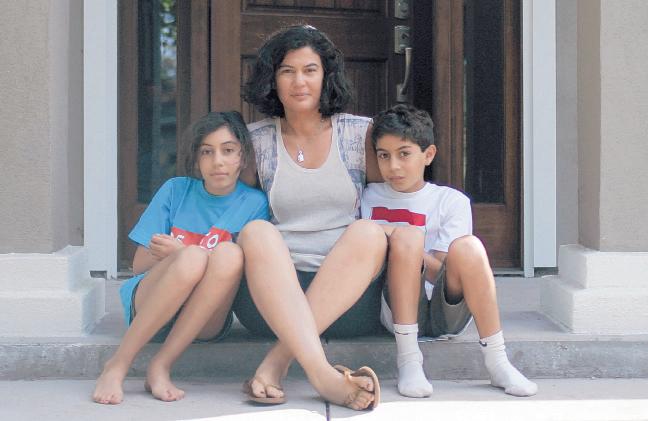
KEVIN TSUKII // Mosaic Staff Photographs
Despite the overthrow of President Hosni Mubarak, Rasha El Dessouka continues to wait for progress and change in the role of women. Dessouka sits with her two children, Lyla and Jimmy, on the porch of her home in Los Altos.
of foreign women in Cairo said they had been harassed.
In general, women are discouraged from reporting sexual assault or harassment for fear they and their families will be disgraced.
In a culture where being a virgin is considered sacred, women aren’t likely to confess to being violated, Dessouka said. Women often are blamed for the situation because of the way they dressed or where they walked.
Egyptians have finally begun to act on their frustration over gender inequity. The divide reached a head on International Women’s Day in March, when hundreds of women gathered in central Cairo’s
Tahrir Square to demand an end to sexual harassment.
Men opposed to the protesters soon outnumbered them. They charged the women, shouting, “Go home, go wash clothes. You are not married. Go find a husband.”
According to Dessouka, such actionsillustratetheprevalentnotions about women’s role in Egyptian society.
Under Egyptian law, women have the same rights as men and can receive the same level of education as their male counterparts; however, they do not have the same opportunities to receive an education and find it more difficult to gain employment.

Arts in schools under siege
BY JASMIN RAMIREZ Mosaic Staff Writer
Fifth-grader Sinai Dimas loves being a part of the mariachi group at San Jose’s Horace Mann School—and so does her father, Alejandro.
“I am really happy becausetheprogrambenefits her with her classes, and she just loves it,” he said. Horace Mann Principal JuanCorreaisn’tsurprised by the reaction. “I believe music is one of the few activities you use both sides of your brain, and that it helps students and exposes them to new things,” he said.
“English, science, social studies, math,technologyandtheartsallow us to realize who we are as humans and how we connect to each other.”

Butextracurricularartsprograms such as Horace Mann’s mariachi group are facing extinction in a climate of budget cuts and lean times that have hit California hard even beforetheeconomicdownturntwo years ago.
With an emphasis on the California state standards testing, school administrators are being forced to make difficult decisions when it comes to music, art, and sports— programsmanyeducationalexperts say enriches children’s lives beyond reading, writing and arithmetic.
“Music programs are important to schools because they provide a curriculum that rounds out what kids should be learning,” said MarcelaDavisonAviles,executivedirector of the Mexican Heritage Plaza.
Aviles’ group is so passionate about preserving arts programs it has held fundraisers to support San Jose schools such as Horace Mann. The Mexican Heritage Corporation recently held a benefit concert at San Jose State University featuring Los Tigres Del Norte, a Grammy-winning band from San Jose.
The group attracted about 1,000 people to the Event Center for a Save The Music for Our Kids concert last weekend.
Sinai, 12, endorsed the effort by Los Tigres, often called “Regional Mexican music’s greatest statesmen.”
If Mann’s mariachi program is disbanded, “I would be very sad, and try to do a fundraiser for it,” said Sinai, a slight girl with short brown hair and brown eyes.
Some of the concert’s proceeds will be used to help Mexican Heritage Corporation programs and the San Jose Mariachi and Mexican Heritage Festival. Officials will leverage concert funds with grants from the Castellano Family Foundation, Hewlett Foundation, and National Endowment for the Arts. (The Castellano Family Foundation is a sponsor of the Mosaic San Jose High School Journalism
“
In the eyes of the Egyptian public, a woman’s main job is the bearing and rearing of children.
“In Egypt, it is more important for women to raise children than it is for them to work,” said San Francisco video journalist Jigar Mehta, a member of an organization that is currently rebuilding slums in Egypt. “Even in poorer families, where men and women both have to work, women are still expected to raise the children.”
Although the older generation has learned to live with such social expectations, younger Egyptian women have little tolerance for discrimination.
“We need a non-sexist Egypt,”
I had worked for many years, and I was ready to live a more traditional lifestyle … women in Egypt that continue to work still have to look after their children or have to have their mothers look after their children.”
— Rasha El Dessouka
said Hanna El Hattab, who led demonstrations at the White House to support the Arab Spring uprising. “There is a lot of enthusiasm for women’s rights at the moment, but gaining more respect for women’s personal freedoms will be a major challenge.”
While Egyptian women have effectively ignited a cultural revolution, they have found it difficult to uproot deeply ingrained views.
The new Egyptian leadership has created a council of military leaders to govern the country until a new president is chosen in the elections expected to take place in the fall. The committee is made up entirely of men.
Hattab said although women can have the same credentials as men, they rarely are appointed to positions of power.
“Conservative and inflexible politicalforceshavegainedswayand have caused institutional backing for the rise of women to recede,” a 2005 Arab Human Development report found.
With media focusing on the revolution and the emerging government, women’s rights largely have been pushed aside.
Sahar Shamseldin, a women’s rights activist from Alexandria, Va., said the best she can hope for is that someday Egyptians would adopt a new attitude about gender roles in society.
Although changes are slow to occur, women in the Arab world have been inspired by the Egyptians’ continued perseverance. In Riyadh, Saudi Arabia, women recently drove cars in protest of sexist laws that prohibit them from driving or riding bicycles.
“Inspired by the Arab Spring, these women have started one of the most significant women’s rights protest movements Saudi Arabia has seen in two decades,” Ben Rattray, founder of Change.org, said in a statement. Change.org,awebsitededicatedtothe promotion of social change, helped launch the driving campaign in June.
“There are more changes that should be made,” Dessouka added. “But at least, the country is finally in a position to strive for change and, in turn, inspire change in other places.”
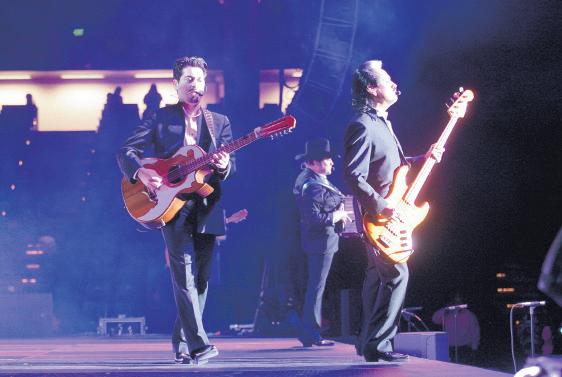
Workshop.) It was a high-energy event from thebeginning.Theconcertattracted fans that danced and sang along with the music.
Despite such fundraising efforts, the situation remains bleak for extracurricular programs in California’s public schools. It’s the same across the nation where districts are facing their deepest budget cuts since the recession of the mid-1980s.
A 2009 study funded by the William and Flora Hewlett Foundation found that 89 percent of California schools fell short of the state’s goals for arts education. It reported that 61 percent of schools didn’t have one full-time arts specialist, and
KRYSTAL JARA //Mosaic Staff Photographs
students attending “high-poverty” schools had less access to arts instructionthanthoseinmoreaffluent communities.
Among the recommendations, thereport’sauthorssaidthateducators must show that the arts are a core subject.
“We need to let our elected officials know we value culture, let them know art is more than painting and drawing,” said Brian Taylor, chairman of the San Jose State University art department. “Art educationteachespeopleproblem solving and innovation.”
Somepolicy-makersunderstand the value of the programs. But it still costs money to fund them.
“As a community we will have to become more creative to bring art and music into schools,” said Leon F. Beauchman, a member of the Santa Clara County board of education.
Aviles has led the charge in creativity through the Mexican Heritage Corporation’s fundraisers. Supporterslikeherhavebecomethe last line of defense in saving these programs.
“If you take art and music out of school, you take the heart out of the schools,” Aviles said.
James Catterall, a professor of urban schooling at the University of California-Los Angeles, found in a 10-year study that students who studied music achieved higher test scores regardless of ethnicity.
FRIDAY // JUNE 24, 2011 // PAGE 7 MERCURYNEWS.COM/MOSAIC
The Hernandez brothers, Jose, Jorge, and Hernan of Los Tigres Del Norte spread throughout the stage of the San Jose State Event Center for Save the Music For Our Kids Benefit Concert.
Sinai Dimas
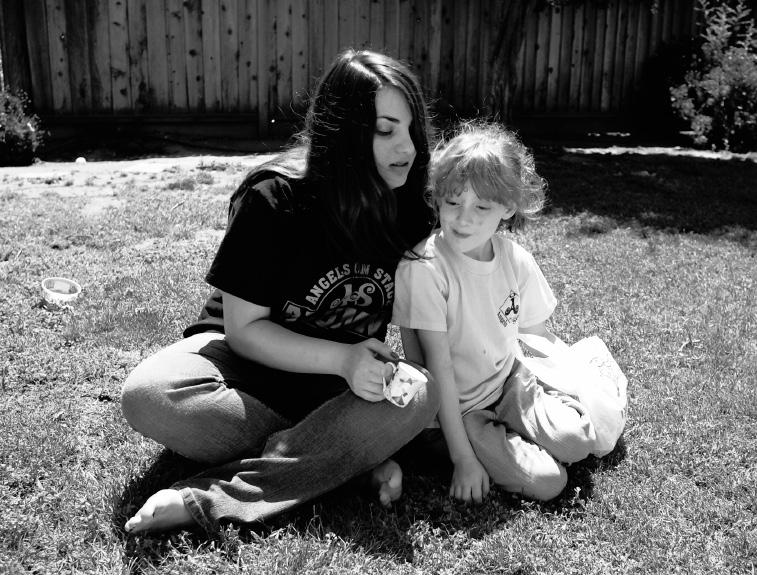
Able Angels
Musical theater company for disabled kids gives them a place to shine
BY SOPHIE HO Mosaic Staff Writer
With the help of Angels on Stage, Katie Heathcote can be a tiger.
Growling like a ferocious feline, Katie gets on all fours and runs around the stage in full costume, including a furry tail, while the crowd laughs with her.
She’s an Angel — 6 years old, and autistic.
Katie is one of 95 actors at Angels on Stage, a non-profit, San Jose-based musical theater company that caters to children with special needs. Katie is able to show the world her talent, and invite it to look beyond her disability.
Angels on Stage produces popular plays such as “The Wizard of Oz,” “The Jungle Book” and “Aladdin” -- with one major difference. Unlike other Bay Area children’s theaters, the 3-year-old company works specifically with mentally and physically disabled children and teenagers.
The company takes children and youth from ages 5 to 22 and puts them in the spotlight. Individuals find that at Angels on Stage, capability matters more than disability.
“Angels on Stage is all about celebrating ability,” said DeAnna Pursai, head of the program. “It’s about perception, not perfection.”
Compared to other Silicon Valley special education programs, Angels on Stage is not about mainstreaming or assimilating its actors.
“annual show in mid-March.
The 95 Angels are split into two casts, Cast A and B. The only difference between the two groupsismorningversusafternoonrehearsals.
Between the separate rehearsals is a special half hour of time called showcasing. During this half hour, the Angels sign up for slots and perform their talents in front of their peers and parents — anything from jokes, songs, original lyrics to covers of popular pop songs.
“What we found with our kids is that they have incredible abilities and they want to show that without limitations,” said Nina Anderson Duncan, stage manager and marketing director, who has an autistic niece and nephew in the program. “It’s a time to be with peers and everybody gets the same thunderous applause.”
At each rehearsal, about 150 to 200 people stick around to watch their Angels.
“We had one little girl last season who was
Angels even has an adaption consultant who manages the children’s needs, such as handling ramps for the physically handicapped. There is also a safety officer to monitor the production.
The sheer size of the productions is large. There are about 50 Angels per rehearsal, each with their own buddy coach.
Angels on Stage has six paid staff members and about 75 parent volunteers.
“The overwhelming part is keeping everything safe. It’s a lot to manage, but the incredible thing is that everyone there is there for the right reason — they want the kids to succeed,” said Duncan.
And many of the Angels do succeed.
Janet Heathcote, for example, has three autistic children and a buddy coach in the program. She and her husband are also volunteers, and have been with the program since the very beginning. “Angels really lights a fire under these kids,” Heathcote said. “They come out with a desire to be more, to do the most they can with themselves. It’s really empowering.”
We had one little girl last season who was so shy she turned around and sang to the wall. She got the same applause as everybody else. It’s a time and place they can explore, and nobody is telling them what to do or controlling them.”
— DeAnna Pursai, Director of Angels on Stage
Her 13-year old son, John, is autistic and was one of the lead rolesforlastseason’sproduction.
“We learn what we can do, learn how to work together, and just have a good time,”said John. “All I have to say is that it’s a good learning experience. If you go down, you’ll have a good time.”
AUTISM // FROM PAGE 1
“God blessed me with the ‘glass half full’ mindset,” said Heathcote, beaming, the image of a proud mother.
After all, who wouldn’t be proud to be the parent of five successful and mature children — Patricia, Christopher, Arianna, Jon, and Katie.
Heathcote has made sure Christopher, Jon and Katie are comfortable with the knowledge they are autistic.
“My kids know that they’re autistic—and should know,” Heathcote said. “We tell them that being autistic isn’t any different from having brown or blue eyes. It doesn’t define you. It’s only a small portion of who you are.”
Eldest son Christopher is the tallest sibling, with dark hair and intense eyes. He likes studying war and playing air guitar to rock and roll.
His younger sister Arianna was home schooled and graduated from high school early. She plans to attend San Jose City College in hopes of transferring to a fouryear university to study genetics, and in particular, how developmental disorders relate to families’ genetic makeup.
Arianna volunteers as a “buddycoach” at Angels on Stage, a San Jose-based non-profit musical theater company that caters to children with special needs.
She seems to hold a boundless amount of patience and maturity beyond her years.
Jon — known by his family as “Jon-Jon”— has 13 years of charm underneath his belt. With red hair, pale skin, and a faint moustache, Jon played the lead role of Aladdin in last year’s Angels on Stage production.
Youngest daughter Katie — “Katie-bird” to her siblings — has infinite energy. Part ballerina, part wild tiger, Katie likes to play fairies just like any other six-year-old.
Family support and one-on-one attentionthroughhome-schooling, combined with the full family experience of Angels on Stage, have helped the Heathcote family.
The children and parents are all involved in the program in some way: Christopher, Jon and Katie are Angels; Arianna is a buddycoach.
Eldest daughter Patricia, her husband Gavin Darby, and the Heathcote parents are all volunteers.
According to Katie, Angels on Stage “is good for autistic children because it stretches their brain.”
She then scratched her tousled red locks, and said that she didn’t know what else to say because her brain was too small.
“It made me feel strong,” Katie said of her role in an Angels production. “I learned everyone will be strong and helpful. Angels on Stage makes us cooperate, work together, and grow strong and kind.”
Her siblings made similar remarks.
“We meet all kinds of people who all come together and all have a good time,” said Jon. “My favorite part is the final performance. I always feel nervous, but I go out and have fun. At the end, you feel like you’ve won a million dollars. It’s exceptionally fun.”
“I really do believe that the atmosphere tells the kids that who you are is fine, that you’re valuable, that you have a place,” said Janet Heathcote, mother of Katie, whose five children are involved in the program.
Since its first production in 2008, Angels has grown from working with 41 performers and 35volunteer helpers, known as “buddy coaches,” to 95 Angels in two casts and 77 buddy coaches.
Each year, the company has staged six productions.
HOW IT GOT STARTED
Angels on Stage does not get its namesake from the angelic nature of its actors, although staff and family might argue otherwise.
The company is named after Pursai’s sister, Angel Ellenberg, who participated in a similar program, the University of Saint Francis Jesters. Pursai, then a freshman in college studying special education, worked at Jesters as a buddy coach. The rest is history.
“Angel was such a talented performer, and I realized I wanted to bridge this gap between the idea of disability and the fact that there was a whole lot of talent in society,” said Pursai.
Mentally and physically disabled children participate in weekly Saturday rehearsals beginning in October to prepare for their
so shy she turned around and sang to the wall,” said Pursai. “She got the same applause as everybody else. It’s a time and place they can explore, and nobody is telling them what to do or controlling them.”
Each Angel is paired with a buddy coach, who can range from a middle-school to a college student.
“The buddy coach is first, a friend,” said Duncan. “They help direct the kids, help them out with their lines.They develop really special relationships outside of Angels on Stage. It’s really neat to see how they bond.”
Just like at any other musical theatre, Angels audition for their parts.
One main ideal of Angels is that every Angel gets a part and a line if they want it — full participation is essential. They rehearse lines, block their positions, and learn songs and dances with their directors.
The musicals, however, are adapted. Director Pamela Lindsay works with the Angels through the script, shortening lines and dividing parts.
The staff picks stories that the audience is likely to be familiar with, in case of unplanned events.
“What if one of the Angels goes on stage, and doesn’t want to leave?” said Duncan. “We have to make sure that the audience knows what’s going on.”
“We have to really accommodate and adapt theater life to the kids,” said Duncan.
After the shows, both Duncan and Pursai agree that the majority of the Angels gain self-confidence, social skills, and learn to work with a team.
“We’ve had some Angels who come here and leave with their first friends,” said Duncan. “During the season, some of the Angels go to their first ever birthday party.”
MONEY ISSUES
Angels on Stage charges $150 per Angel, which includes the rent of the venue, a Tshirt, costume and other items.
“We charge them a lot less than what it actually costs to run the production,” said Duncan. “We really depend on donations and grants. We don’t have a corporate sponsor.”
In the future, Angels hopes to become a model for California, even across the nation.
For now, those dreams will have to wait.
“We’ve talked about future planning, but financially we’re in no situation to act,” said Duncan.“We need to find a home, get funding — we can’t even pay the salary of some of our staff, and we need to rent equipment.”
The company is currently capped at 100 Angels they can serve with their primarily volunteer-based staff.
“I always fear there will come a day that more people than we can support will come,” said Duncan. “We don’t want to turn anybody away.”
Christopher aims to continue his involvement with the company once he ages out of the program.
“Angels on Stage has been a success to my career. Because I’m 22, which is the max age for Angels, I’m going to return as a buddy coach next year,” he said.
Heathcote called it “cheap therapy.” The program costs $150 per Angel per season. And the results are priceless.
“Everybody’s gotten something out of the program,”Heathcote said. “I’ve learned my Christopher’s an actor. Jon, he’s really good with people, and charming. I didn’t know Katie’s maturity before. Arianna got a lot of self-confidence,andwalksawayfeeling good about herself.”
“It just goes to show that kids will surprise you,” Heathcote said. “You can’t put limits or caps on them.”
At Angels on Stage, the Heathcote children who are Angels find a place where they can work hard and cheer on their friends. It shows them they’re not as different from others as they think, Jon said.
“You have to have faith that the kids will figure it out,” Heathcote said.“Their spirit makes them keep trying. They never give up.”
FRIDAY // JUNE 24, 2011 // PAGE 8 MERCURYNEWS.COM/MOSAIC
KRYSTAL JARA //Mosaic Staff Photographer
Arianna and Katie Heathcote, of the Angels on Stage program, interact on the grass in their back yard in San Jose.
Medical marijuana cards easy to get, some say
Police focus efforts on regulating dispensaries, not doctors
BY LAURA COSGROVE Mosaic Staff Writer
In the fading daylight at San Jose’s Music in the Park festival, two robust young men take their medicine, swaying as they enjoy the soft reggae music.They exhale the skunk-like odor of marijuana with nonchalance a few yards away from a cop.
Their medical marijuana cards give them legal immunity.
The scene is becoming common in California, where people with ailments ranging from nausea to cancer can procure a doctor’s recommendation for medical marijuana.
A medical marijuanacardallows patients to grow and buy marijuana under state law, and those in the system say that qualifying for this freedom is simpler than one might think.
license, according to the San Jose City Council’s estimate during a mid-April meeting.
Dispensary owners estimate that smaller dispensaries have from dozens to hundreds of patients. Larger dispensaries have thousands.
Ramirez, who has a medical marijuana card for back pain from a car accident, places the blame for abuse on doctors who recommend the drug to those who don’t need it — not on the dispensaries.
“Medical marijuana patients have to get a card from a doctor recommendation to buy from any of us, but no one regulates who the doctors recommend but the doctors,” Ramirez said. “It’s too easy to get one.”
“It is very easy to get a card, and it’s very easy to abuse the system.”
“If you have anything wrong with you at all, you can get a card — or if you give the doctor 45 bucks,” said one of the concert-goers, who did not want to be identified, with a relaxed laugh.
Contrary to its intended use under state law, medical marijuana can function as a way for recreational drug users to get high under the protection of doctors’ recommendations and legal dispensaries.
It is a “three-pronged problem,” San Jose Police Sgt. Jason Dwyer said. There are those who buy without a card or lie to get a card, dispensaries that sell illegally, and doctors who issue unnecessary prescriptions.
Law enforcement is focusing on controlling the dispensaries, Dwyer said. In them, police perceive the biggest threat of corruption, and police can control the dispensaries more easily than they can the doctors, Dwyer said.
“Once dispensaries curb the rules, they keep on cutting corners. And, eventually, it turns into a large-scale illegal drug operation,” Dwyer said.
San Jose houses a total of 236 licensed and unlicensed dispensaries, according to Pedro Ramirez, operator of a local branch of non-profit dispensary ReHab 420. Ramirez said he got the figure from dispensary collaboration at medical marijuana conventions such as HempCon, which was held in San Jose in late January.
Ninety-eightdispensarieshavea
John Nun
Colorful ads splashed in Metro magazine and on the Internet aim to attract patients looking for clinics with pro-medical marijuana doctors.
Eighteen-year-old John Nun, who preferred not to use his real name, “went legal” by obtaining a card after nearly a year of smoking marijuana illegally.
After a half-hour appointment, Nun secured a recommendation for medical marijuana from a clinic offering the service at HempCon, a medical marijuana trade show.
“You have to sign some paperwork and give information, and list background medical information,” Nun said of the process. “All you really have to do is provide your reason for it, which, for me, was my insomnia.”
Nun said he needs the marijuana to sleep, but he also uses it for recreation.
He said he shares and sells his medicine to friends who also use recreationally.
“It is very easy to get a card, and it’s very easy to abuse the system,” Nun said.
San Jose 420 Evaluations, the medical marijuana clinic that issued Nun’s recommendation, declined to comment.
But on a recent Friday afternoon, the clinic’s two waiting rooms were full with more than 30 patients, illustrating the booming business of marijuana recommendationsandtheindustry as a whole.
Yolanda Lomas, leaning on the door frame because all the seats were taken, said she came to San


However, not everyone who hopes to get a recommendation has a real medical necessity. Recreational user Ken Ha, who preferred not to use his real name, plans to “take advantage of how easy it is” to get a card and make marijuana more accessible for himself.
Currently, his supply comes from a friend who has a medical marijuana card.
“I’ll go get a card sometime this summer, probably giving nausea or back pain as an excuse, but I don’t really have either of those,” Ha said. “I’d say a vast majority of card-holders aren’t sick. Out of the five people I know who have cards, only one needs it.”
Since possession and distribution of marijuana is against federal law, the Food and Drug Administration cannot set standards for medical dosage.
Further complicating matters is that the amount of THC, the major active chemical in marijuana, varies in different forms of the drug, Chopek said. Despite the abuse of medical marijuana in the industry, Xak Puckett, vice president of the California Medical Marijuana Association, remains an adamant proponent of the drug.
The CMMA is a nonprofit organization that supports regulationofthemedicalmarijuana industry, according to its Web site.
Jose 420 Evaluations because her doctor does not prescribe marijuana. This was her first visit with the doctor. She was there to get a recommendation, she said. “I don’t want to get into any trouble for using marijuana. I need it for my knee pain,” Lomas said.
Rave promoter counters events’ image
BY STEVE VU Mosaic Staff Writer
As one of the founders of Vital SC, a Santa Cruz-based music productions company, Jared Armbrust has seen the excesses that haveendangeredpartygoersatthe popular electronic concert events around the Bay Area.
But after 1½ years of promoting events throughout the Bay Area and coordinating 30 events, Armbrust, 23, has determined raves are relatively safe despite what some might suggest.
“I have to say that the community as a whole has become far more responsible,” Armbrust said in an email.“Since promoters have stepped up and taken the initiative to protect the safety of their customers, incidents seem rare and nowhere near as severe.”
The co-host of Above & Beyond – a rave held in May at the Santa Cruz Civic Auditorium – says customer safety has become a priority.
In summer 2010, a 15-year-old girl died and about 100 people were hospitalized after ingesting the hallucinogenic drug Ecstasy at a Los Angeles rave. Such incidents have heightened awareness of the risks involved in attending raves.
“Protecting our customers from possible incidents is very important,” Armbrust said. “All of our
events are licensed and sanctioned by the cities in which they are held.”
Armbrust said he has emergency medical technicians, along with security, on site to ensure guests’ safety.
Associated with lights, skimpy neon lingerie and electronic music, raves are often seen as events wherepartygoersabuseillegalsubstances and act inappropriately.
Illegal substances are not allowed at SC Vitals events and guests are searched before entering. Illegal substances are confiscated without consequences and given to authorities.
According to Armbrust, no arrests were made at Above & Beyond, but too many dance-goers were intoxicated. He said some had to be treated by emergency medicaltechniciansandeventually sent home.
“People that choose to take any substance do so of their own accord and we make sure to try and prevent them from entering our event,” Armbrust said.
Not everyone is abusing drugs or alcohol, he added.
One way to combat drug use is the banning of baby pacifiers. Those who take the hallucinogenic drug ecstasy use the pacifiers to help prevent teeth grinding, which is a side effect of the drug.
Finger lights are light emitting diode gloves used to enhance the hallucination effect of Ecstasy. Light shows encourage the use of ecstasy, but that doesn’t stop guests from taking them if they are prohibited.
“Will preventing finger lights stop people from taking illegal substances?” Armbrust asked. “That is highly doubtful.”
Problems at raves could be found at any public social gathering, Armbrust said.
“We deal with the same issues as any bar or club, which mostly comes down to people that drink far too much before entering the event and need some water and time to come to their senses,” Armbrust said.
Illegal behavior is discouraged and guests are notified the consequences for acting out. Guests must realize that raves aren’t about being drugged up. The good vibes and safe fun is what should define raves.
“People know that if they are caught using drugs or acting foolishly, this could mean a trip to the police station or to the hospital,” Armbrust said. “Usually these actions are enough to discourage people from bringing illegal substances to our events, and those that choose to do so anyway face the consequences.”
Unlike with pharmaceutical drugs,doctorsneitherrecommend how much medical marijuana to take nor restrict the patient to a certain amount each week, most likely because it is almost impossible to overdose on marijuana, Doug Chopek of MedMar Healing Center said.
That’s how card-holders like Nun can buy more of the drug than they need in order to give or sell marijuana to those for whom it is illegal to buy.
Though he acknowledges that some may do “the party thing,” he said “it’s not up to [him] to be against it” as long it’s used for medicine as well.
“I am absolutely concerned that people would resell or misuse it, but I have no control over what happens after I dispense it. I can only hope it goes to its proper use,” Puckett said. “The healing is what matters the most, not the abuse. People that do that give it a bad name.”
Garage car fire forces building evacuation
BY JANE JUN Mosaic Staff Writer
Workers in a 15-story business tower on South Market Street in San Jose were evacuated June 22 after a car caught fire the building’s underground parking garage.
“A car just (expletive) blew up,” said a man who saw the remains of the car.
Bob Boyd, 33, who was doing construction work in the building, was in the elevator of the Market Post Tower at 55 S. Market St. when the fire alarm was pulled.
“Nothing like this has happened before,” he said with a nervous laugh. “It was like, get down!”
The fire was reported around 1:25 p.m. Within 10 minutes, all the workers in the workers were evacuated. Most of them went to Plaza de Cesar Chavez, which is a block away. It was unclear how many people were in the building.
No one was injured and employees returned to work by 3 p.m.
The man who reported the fire to the San Jose Fire
Department said he was fixing a water pipe when he smelled smoke coming from the second level of the parking garage. Three San Jose city fire trucks and a police car responded to the blaze.
The fire was contained to the car, said San Jose fire Capt. Arlen Summers.
Summers said the car was owned by a woman who works in the building. He declined to disclose any other personal information.
Summers also said that the fire was “challenging” because it was located below ground level. Because fire “burns up,” he said, firefighters faced significantly more smoke than they do with routine fires.
“We were ready to put it out, though, because we trained a lot for it and we dealt with a similar case last year,” Summers said. The cause of the fire is under investigation.
Mosaic staff writers Jose Diaz, Christophe Haubursin, Imran NajamandSteveVucontributedto this report.
FRIDAY // JUNE 24, 2011 // PAGE 9 MERCURYNEWS.COM/MOSAIC
KEVIN TSUKII //Mosaic Staff Photographer
After selling marijuana, an unidentified man smokes a joint with his friend at Music in the Park at Plaza de Cesar Chavez.
NEHA SIMON // Mosaic Staff Photographer
Marijuana bud in a bubbler in the ReHab 420 Medical Marijuana Center.
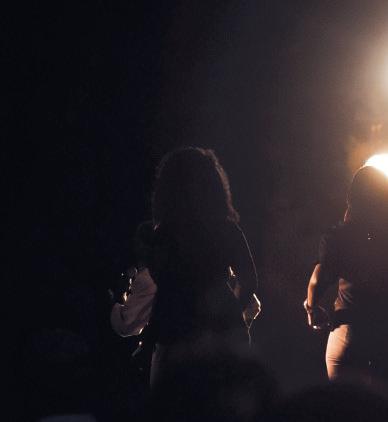

Freddie McGregor and other performers welcomed enthusiastic reggae lovers June 16 at San Jose’s Plaza de Cesar Chavez.
Fans came decked out in summer dresses, heels, long white T-shirts and Jamaican hats.
Those who attended listened and danced to the music.
Little crowds joined to form circles where marijuana joints would be passed around. Others kept their distance from the pot smokers.
The Fisher family of San Jose was farther back in the park, away from the big crowd. Denise Fisher brought her little girls, Cielo and Eden, to the concert to expose them to different cultures.
She was once part of the bigger crowd but said that with her children, she’s experiencing it differently now.
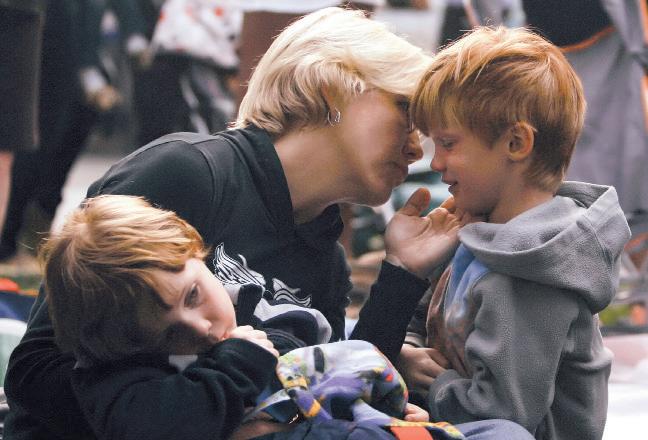
FRIDAY // JUNE 24, 2011 // PAGE 10 MERCURYNEWS.COM/MOSAIC
LEFT: Warm weather and free music drew large crowds in downtown San Jose.
ABOVE: A family shares a tender moment at the Freddie McGregor concert.
On a warm summer day, music lovers of all ages and diverse styles gathered in downtown San Jose for a free reggae concert.

Free reggae concert, summer sun bring crowds to San Jose’s Plaza de Cesar Chavez
They’re JAMMING
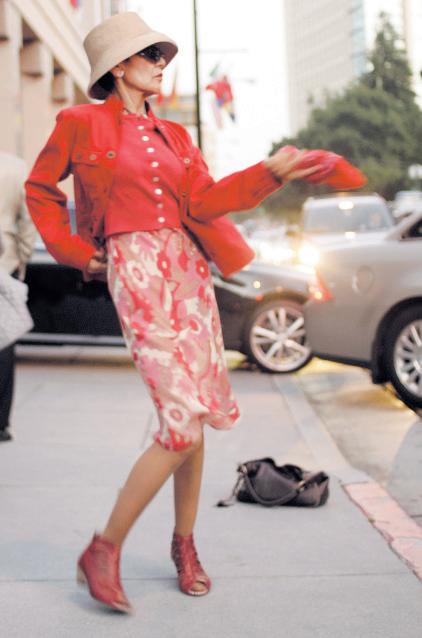


FRIDAY // JUNE 24, 2011 // PAGE 11 MERCURYNEWS.COM/MOSAIC
Freddie McGregor and his band perform the classic song “Guantanamera” for a large outdoor audience.
LEFT: A woman outside the Fairmont hotel danced alongside pedestrians during Freddie McGregor’s concert.
ABOVE: A concert-goer expresses his reggae style.
RIGHT: A girl beats the heat by splashing and playing in the fountain at Music in the Park.
STORY
by KIMBERLY IBANEZ Mosaic Staff Writer PHOTOGRAPHS by KEVIN TSUKII and NEHA SIMON Mosaic Staff Photographers
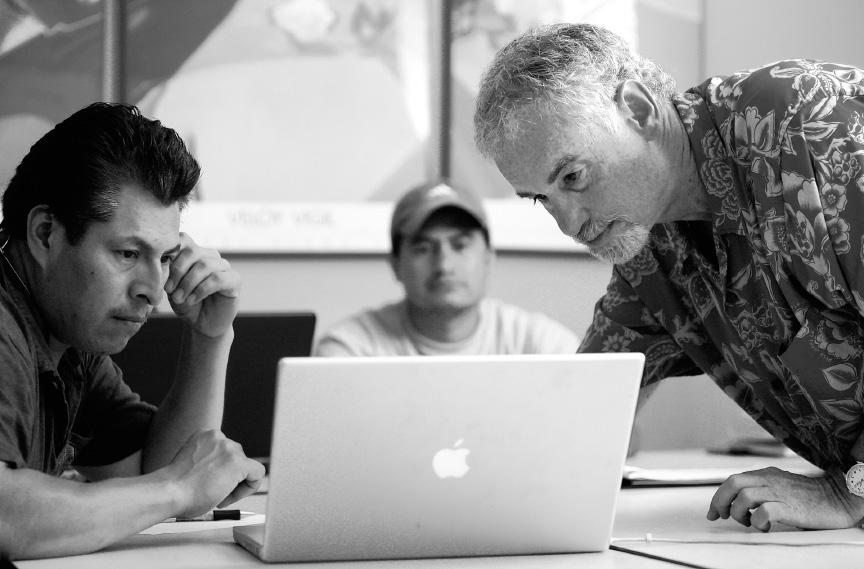
Documentary explores hidden world of day workers
BY JANE JUN Mosaic Staff Writer
The only thing most people know about day workers is that they wait in front of home improvement centers and other public locations looking for work.
But now day workers want to tell their stories. And they’re doing it through a couple of unusual and unexpected mediums — a documentary film and blogging on the Internet.
“The documentary is a way for the day workers to reach out to the community. They can’t go knocking on doors saying,‘Wanna get to know me?’ said Elliot Margolies, founding director of the Midpen Media Center in Palo Alto. “With the documentary, people can check them out and see what they’re all about.”
The documentary is titled “Borderless Dreams” and features the lives of day workers and how they came to work in the streets. The interviewing, filming, and some of the editing were done by a team of seven to eight of the workers.
Their training started last September, when Margolies brought a group of day workers into the cozy red walls of the media center and began teaching them the basics of film production. The documentary took approximately 10 months to complete.
Margolies, lead producer of the documentary, said he wanted to give day workers a way to express themselves after he started volunteering 18 months ago at the Day Worker Center of Mountain View, a nonprofit organization that provides job-matching services betweenhomeowners,businesses and workers.
One of the day workers featured in the documentary is Marcos, who came to the United States from Mexico looking for a job so that he could pay for his daughter’s medical bills. He sends most of his earnings to his family in Mexico and has not seen them in six years.
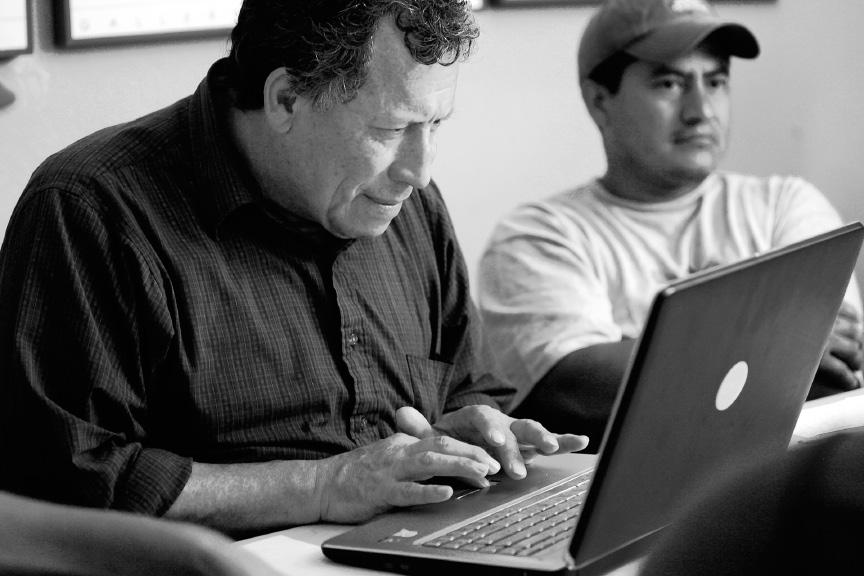
The Midpen Media Center paid the crew $11 an hour to produce thedocumentary.Thoughitwasless than they would normally make on an average day, Margolies said the workerswerehardworkingandpassionate about making the film.
“These people are used to being treated like paid workers. Another thing that was so great about the documentary was that we treated them like clients,” said Margolies.
Fifteen high schools and college classes have signed up to see the documentary. Screenings are set to start in August and will be shown with presentations, handouts and discussion sessions.
The Silicon Valley Community Foundation gave a $30,000 grant for the project, which not only funded the documentary but also paid for a computer that Margolies used to teach blogging at the Day Worker Center.
In his classes, he shows day workers how to post their experiences onto a blog site, dayworkersjournal.wordpress.com, which was established last February.
Fernando Gonzales, 41, created his Wordpress account during his first blogging class. For his first post, he wrote about the first time he arrived at the center, soaking wet on a rainy night. He wrote that though it took him a week to
get work, he built friendships and received food from the center during his wait.
He says he wanted to blog because he was curious and thought it was a good opportunity to try something new.
Another day worker who takes blogging classes at the center said, “I want to learn [blogging] because I have a lot of skills like modeling and tiling, and I want to learn new skills that will help me do different jobs.”
The workers write posts with a pen or pencil, or straight onto a keyboard, depending on preference. Since their posts many times are written in Spanish, they are translated into English so they can be read by the general public.
According to the Pew Hispanic Center, the undocumented immigrant population in the United States in 2008 was estimated at 11.9 million. Many of the day workers are “unauthorized” and “don’t have papers,” according to Margolies.
Lines from the documentary illustrate Margolies’desire to show day workers as human beings, not as statistics.
“Our hope is that you’ll go beyond the stereotypes, beyond the headlines … and have a sense of [the day workers] as people, not unlike you or the people close to you.”
Coffee from Philz is a singular experience
The caffeine students need to survive their lectures is only a two-minute walk from San Jose State – and it comes in an unusually delicious medium.
The low-key Philz Coffee shop has found a niche in downtown San Jose, successful among the better-knownbrandssuch as Peet’s and Starbucks.
This might not seem a simple feat. But when you consider the quality of the coffee, Philz emerges as the clear winner over the corporate class of Starbucks or the highbrow superiority of Peet’s. It also doesn’t hurt that it has attained hipster cred.

Image attack: Movies
Over-Hype scary shark stories
I stand before the ice-cold waters of Monterey Bay with a scuba tank strapped to my back and flippers in hand. It is breakfast time, and I am certainly on the menu.
Monterey Bay is home to the notorious white shark. The creature is popular in the news and entertainment media for its attacks on surfers, swimmers and scuba divers. However, we should fear sharks less than we should fear for them.
Take it from a 17-year old scuba diver: The sharks are not monsters.
In film, Hollywood enhances the black beady eyes, large snouts and blood-red gums to create a menacing exterior.
co-founder of the Californiabased Shark Research Committee, tested every human fluid and found that sharks only were attracted to the fluids of the stomach.
Shark attacks are classified three ways: attacks to feed, attacks to determine the nature of an object, and attacks to warn a potential threat of its intrusion into the shark’s territory. Most often shark incidents areinvestigatoryattacks. The fish bites into an object to understand what it is.

The American public’s negative perception of white sharks is directly related to their declining population. As a result, these fish are now on the endangered species list. Sharks have some commercial value, but more often, fishermen compete to catch the largest shark purely for sport. Sharks are an integral part of the marine ecosystem. Unlike dolphins and whales, which hunt live food, sharks often eat the sick or dying. They help keep the ocean population healthy, according to the Organic Research Group sponsored by the University of New England. The shortsighted view that sharks are better dead than alive will only lead to an imbalance in marine life. We don’t have to like sharks, but we do have to protect them.
Shark attacks, however, are rare and often not fatal. Although white sharks attack humans, we are not a part of their natural diet. Great whites often break contact after the first bite because humans have more bones than muscle and fat, according to Discovery Channel’s website. Humans are hard for sharks to digest.They need energy-rich fat, which humans lack in comparison to seals and other marine animals.
Myths and misconceptions about white shark attacks have grown as thick as ocean kelp beds.
I have never seen the pointed face of a white shark while scuba diving, but I am sure they are out there. Each time I leave the safety of the rocky cove, I know I have entered into their territory and that I am at risk of being attacked.
However, before and during every dive, I take numerous precautions to reduce the risks, including swimming during the daylight hours, using the buddy system, and staying calm in the water.
Fear of the “great” white sharks often stems from lack of education. Myths and misconceptions about white shark attacks have grown as thick as ocean kelp beds.
First, white sharks are not attracted to blood. Ralph S. Collier,
Divers should be aware that swimming in shark waters is dangerous.Then again, the maneating caricature from the movies like “Jaws” do not exist.
So with sport surfing continuing to diminish the shark population, the only lingering question is: Who is truly the monster?
Exciting flirtation with eReader tests love of printed word
One day while sitting in my room, surrounded by dozens of books I’ve collected over the years, I fooled around with the Amazon Kindle.
I had borrowed the eReader from my cousin, figuring I could use it as a prop for an English project. Little did I know I would end up cheating on my beloved books by using a newfangled device.
to do more to keep customers.
IN MY OPINION
Even with programs catering to youngsters, I don’t know many people my age who still go to the library for resources. Instead they turn to the Internet. If libraries were to close, there would be outrage from older generations but I doubt teens would notice after the initial shock wore off. They would be more interested in tech advancements.

the most delicious mochas in existence.
Ordering is a bit confusing. But if you stand in front of the counter for a while with a confused expression, a scruffybearded barista will explain the system with only a hint of condescension.
The Tesora blend is a nutty, smooth staple. It’s the best choice for first timers. After a few visits, it will be time to advance to a blend with a roast that best suits your taste: The darker, bitter roasts are stronger; light roasts are best suited for tea lovers.
Some of the more popular blends include Jacob’s Wonderbar Brew, a satisfying dark roast, Sooo Good, a light roast that lives up to its name, and the Mocha Tesora, arguably one of
Mainly, though, Philz pulls it off because it skips the fancy frappucinos and focuses on the basics. The cafe offers more than 30 well-crafted light, medium and dark roast blends, not bothering with the less-nuanced single-bean or espresso drinks. Philz drips each cup, which makes for a slightly longer wait but a stronger, more flavorful coffee. Quality is obvious from the first sniff, and upon the first sip, anticipation transforms into a strange giddiness reserved only for the best of food and drink.
Don’t fear. While Philz has mastered the talent of appealing to the young and hip, it doesn’t alienate the older crowd. Genuine love of coffee welcomes all.
If you have a sweet tooth or prefer blended coffee drinks, you might want to skip Philz. But if you enjoy the taste of a good coffee – or if you think you might – forgo the thin, watery Starbucks lattes and head straight to this small Bay Area chain. You will love the coffee. You might even become addicted like me.
And the hipsters you encounter aren’t that obnoxious.
I had told myself I would never give in to thenewtechnology,that I liked the feel of curling up with a good book and turning its pages too much to change. But I’ll behonest,Iwasintrigued witheReadersandtablets. After all, my generation –appropriatelydeemedtheInternet Generation – loves technology. I thought I was an old-school reader, walking into bookstores and browsing for hours. But bookselling-giants like Borders started closing and smaller bookstores got more difficult to find. Even libraries started competing against eReaders and tablets, trying to lure young people back to the land of the Dewey Decimal system. Visitors to San Jose’s Dr. Martin Luther King Jr. Library can check out eReaders as well as books. The library also offers programs and facilities of interest to young people and adults. Such libraries are doing a fairly good job at keeping people interested, but in the next few years, it’s going to become more difficult to attract visitors.
EReaders will be offering more information, more insight, more help in understanding the material. And libraries will have
For example, textbooks will be accessible on tablets, allowing students to have good posture and no backaches from hauling books around. Furthermore, scholarly journals will be offered as well as animation that accompanies texts.
If it’s the price that turns people away, they should know eReaders and tablets will pay off in the long run. And if you don’t have the money to purchase one, you can experiment with them at libraries or schools.
According to Peter F. Young, a San Jose State University journalism professor, digital reading cuts the cost of books by 50 percent to 60 percent. He also predicts more technological advances will increase the fascination of them.
Even though there will always be people like me who love the feel of books, there will also be people who, like me, have crossed over to the other side.
So go ahead and experiment. Borrow from your library or from a friend. It’s OK to cross over. You might be surprised at what you find.
FRIDAY // JUNE 24, 2011 // PAGE 12 MERCURYNEWS.COM/MOSAIC
KEVIN TSUKII // Mosaic Staff Photographs
Elliot Margolies, right, teaches Fernando Gonzales how to publish their stories as day workers at the Day Worker Center in Mountain View.
Ernesto Navarro uploads his story about his first visit at the Day Worker Center in Mountain View.
Alyssa
Matsuhara
IN MY OPINION
Isabelle Monahan
IN MY OPINION
Laura Cosgrove
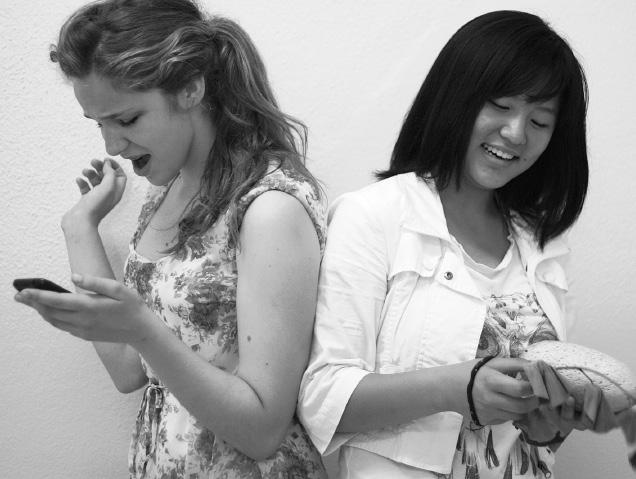
social networking
PRO: Embrace social evolution — Web helps build new relationships
It seems that whenever human behavior changes,somepeopleopposetheevolution.
When humans first began to settle in agricultural communities, creating cities andwrittenlanguages,nomadscontinued to roam the Earth as if they were still in the Stone Age.
When teenagers first began to go on drives together and explore other new freedoms in the Jazz Age, parents worried about devilish behavior and promiscuity.
And, in the Web Age, we created the technology to connect with our friends and classmates in the casual, easy mode of social networking. Still, some mourn the loss of the phone calls and handwritten letters of days past.
To those I say: Bollocks, you ignorant sluts!
No, interaction through a computer is not like human interaction. But merely because it is something unlike anything the world has yet seen does not mean that its strangeness is harmful. Quite the contrary. Strangeness defines innovation.We must embrace it.
Social networking has become another sort of societal foreplay. Before, a pretty ladycouldexchangedoeeyes across the room with the quarterback. Now she can use the doe eyes along with an excessive “like”-ing of the quarterback’s profile pictures. Facebook and other social networkingsiteshavebeenassimilatedinto our society as an optional step in the friendshipgame—agamedefinedbyallthesmall, hesitant things we do in the slow journey to a fully blossomed friendship.
exactly that. But, critics say, when a teenager – awkward, shy, and irresponsible by the very definition of that halfway phase of life – discovers social networking, it can turn into an addiction à la crack cocaine or World of Warcraft.
In those cases, social networking would be a problem – but these critics underestimate us. Facebook hasn’t replaced tangible relationships in my life. My closest friends and I rarely chat online. We get way too much of each other during the day, anyway.We use social networking for homework help, to set up dates and to build a rapport with people to whom otherwise we wouldn’t say four words. Honestly, if given the choice between checking out my friend Julie’s stupid-looking profile picture and watching her make a duck face with Pringles in real life, I would choose the latter. But I can have both, and an avenue for sweet, sweet public humiliation to boot.
Some mourn the loss of the phone calls and handwritten letters … Bollocks, you ignorant sluts!
Through shared pictures and messages, we can know what our friends are doing even if they are many miles away. We can know whom our prospective significant other has dated before and whether the object of our secret affection writes like a blind caveman.We can know whether our enemies failed or aced the latest chemistry test. Let’s face it: We are nosy, nosy creatures. The desires to know our fellow man, to assess him, to decide whether we want to build a connection with him, and to keep that connection, are innate in our nature. Why not indulge them?
That said, social networking should add to our elaborate courtship dance, not replace it. In all cases I have seen, it does
We aren’t cavemen or cavewomen. We have the fantastic gift of a rational mind, and the ability to take everything in moderation. If inventing the wheel meant that we would stop walking altogether, I would be afraid of the wheel, too.
When we have different tools available, we should use them for what they are worth and nothing more or less.
Of course being with the friends you love in person is superior to staring at their black type on a luminescent screen.
But I don’t believe critics’ complaints that social networking replaces real-life interpersonal communication. In fact, Facebook and other sites make it easy to contact a buddy, or the cute girl in your English class and ask her out for coffee, or to set up a reunion of your high school graduating class, or to quiver with envy over your friend’s awesome Mosaic summer journalism camp pictures. It is a small treat, added to our already rich social lives.
We can continue this romantic idealization of the past and look at social networking as a strange, terrifying creature, or we can be humans, not robots, and use social networking while not letting it control us.
CON: Rediscover joys of face-to-face friendships with a Facebook fast
Two months ago, I told a high school friend, Jessica, to take my Facebook account, change the password and keep it from me until final exams were over—no matter the amount of groveling or begging I might impose on her.
I didn’t think I would make it past a week.
I know I’m certainly not the only one who would gasp at the horror of giving up her online social life. Facebook, a Palo Alto-based social networking company founded seven years ago, has more than 500 million active users – most of whom are teenagers. Globally, people spend more than 700 billion minutes per month on Facebook.
That’s 700 billion minutes we could have spent doing something else, like talking to someone face-to-face.
It took me a while to get accustomed to life without Facebook. The first day, I found myself instinctively trying—and failing—to sign on to Facebook without even realizing what I was doing. The second day, I thought I might as well pack my bags, become a hermit and live in the woods.
The third day, I realized life withoutFacebookwas…great.
Without Facebook, I was forced to physically meet with my friends when I wanted to socialize. Seeing facial expressions, hearing voice inflections and being able to nod to a friendnotonlyofferedbettercommunication but a level of connection that was just impossible with an online medium.
new level of creepiness, but this prohibits conversations from becoming too personal. People are always holding back, afraid that what they say to a friend might be read by 380 of their mutual friends. As a result, conversationonsocialnetworkingsitesrarelybecomes more significant than what movie friends watched last night or what type of shoes are the hottest in the market.
During my Facebook fast, I was bored and so I invited my friend on a walk. Away from anonymous prying eyes, she confided in me that she was fighting with her sister, who had partying and drinking problems. I was able to comfort her and give her a hug.
It’s impossible to build a relationship by spending six hours on weekends staring at a computer screen.
I went on more runs through West San Josewithmyjoggingbuddies,hadaconversation with a neighbor I never talked to before, and petted his two fluffy dogs, Clarisse and Joe. I spent more time in my sister’s room and we shared a lot of laughs about our chemistry teacher, who had an obsession with squirrels.
In other words, I found out I had a social life outside my bedroom.
Facebook and MySpace are social networkingsites,notplaceswherefriendshiphappens. They are great tools for sending quick notes or finding the phone number of a long lost twin. However, it’s impossible to build a relationship by spending six hours on weekends staring at a computer screen.
Social networking sites also are very, very public. I can read what you told your girlfriend last year, Oct. 18 at 2:37 p.m.
Not only does that take things to a whole
Building friendships requires time and commitment. Social networking applications like “chatting,” “liking” and “friending” are just superficial replacements and cannot do friendship justice.What used to beagradualdiscoverybetween friends—unearthing each other’s dislikes, likes, and history—is now as “convenient” as a scroll of a mouse. What used to be a genuine smile or a hearty laugh is now typing “lol,” which stands for laugh out loud.
And really, is building a relationship as easy as pressing a “friend” button?
Not only are social networking sites eroding the value of friendships, but face-to-face conversation also is the only way to truly communicate with full understanding. According to Alton Barbour, the author of “Louder Than Words: Nonverbal Communication,” only seven percent of communication is done through words. The majority of communication is transmitted through tone of voice, facial expressions, gestures and other nonverbal forms.
This means that when we type into a little box on the corner of our screen and wait 30 seconds to get a reply back, we’re missing out on a lot. When I chat, I always have to ask my friends when they’re being sarcastic or not, because I can’t see their facial expressions to tell for sure.
School is over now, and my friend offered to give me back my Facebook password. I refused. I don’t know exactly how long I’ll last, but I’m going to try to make it to the end of the summer without it.
Instead, I’ll take a walk with a friend, see her smile and lend a shoulder to cry on.
FRIDAY // JUNE 24, 2011 // PAGE 13 MERCURYNEWS.COM/MOSAIC
KEVIN TSUKII // Mosaic Staff Photographer
OPINION Laura Cosgrove
IN MY
IN MY OPINION Jane
Jun
OPINION MOVIE REVIEW
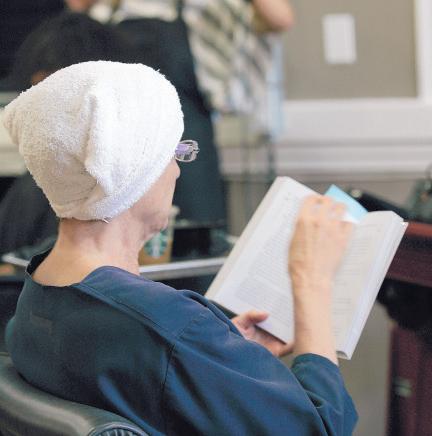


Hair and Sharing
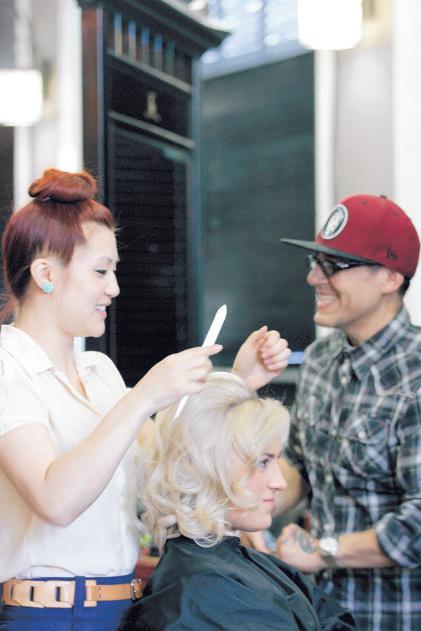
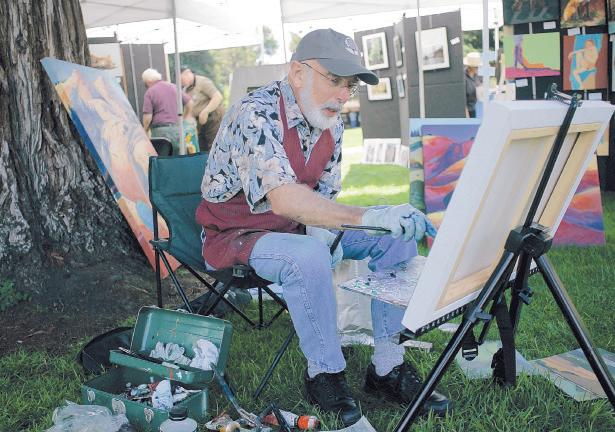
Stylists connect with clients
Hair stylist Johnny Granado, owner of 5 Color Cowboy hair salon in San Jose, considers touching a woman’s hair a “blessing.”
On building connections with his clients, Granado said “It’s such a two-way street. There are no boundaries between us.”
As a regular at 5 Color Cowboy, Tim Kolstad discovered a great friendship after being referred to hair stylist Leti Marquez. They are friends outside the salon as a result.
“When you are sitting in the chair you are so vulnerable and just start talking,” said Kolstad. “No one likes the silence.”
From showing off your engagement ring to sharing your daughter’s college plans, that periodic visit to the salon creates a shared bond.
It’s a relationship built from the roots.

FRIDAY // JUNE 24, 2011 // PAGE 14 MERCURYNEWS.COM/MOSAIC
STORY and PHOTOGRAPHS by NEHA SIMON Mosaic Staff Photographer
All’s fair at the art fair
LEFT: Johnny Granado talks with stylist Kimmy Nguyen about possible styles for a client’s hair at the 5 Color Cowboy salon in San Jose.
Hair salon owner and stylist Johnny Granado, at right, followed his mother’s footsteps. “We have deep, real relationships with our clients. Our relationship is a two-way street.”
ABOVE: Gary Coleman paints while discussing his daughter’s photography experience in Santa Clara at the Triton Museum of Art.
RIGHT: Jaya King twirls near her display to show the fair attendees her handmade skirt.
PHOTOGRAPHS by KRYSTAL JARA Mosaic Staff Photographer
Foodies abound in modern American culture
Exotic dishes taking over the country’s once-bland palate
BY CHLOE TARRASCH Mosaic Staff Writer
It wasn’t that long ago that a burger consisted of a patty, bun, tomato, and some lettuce. Now it’s odd to find a burger not slathered with blue cheese and topped with caramelized onions and alfalfa sprouts.
The All-American burger has changed. And so have the food tastes of America, a country once known for its bland culinary palate.
“There was a time when French and Italian were regarded as exotic ethnic cuisines. To stay on the bleeding edge these days, it takes something like Islamic Chinese or Uighur,” said Los Angeles Times food editor Russ Parsons.
American diners’ interest in more complex and unusual foodstuffs flown in from around the globe, coupled with the demand for fresh and locally produced fruits and vegetables from farmers’ markets, began around eight years ago, according to Jim Howard, vice president of the California Table Grape Commission.
“Food availability has changed,” Howard said. “California, especially, has a lot more access to ethnic foods, Asian foods.”
Exotic dishes are taking a more dominant role in today’s culture. Americans are tired of ordinary dishes, and now they want to experience all the tastes, smells and textures possible. It’s a relationship that America formed with food that was unimaginable just a few decades ago, and is evident throughout the media and American culture. There is an obsession with food particularly shown on television, with two networks focused purely on food and reality cooking shows on various other channels, such as Hell’s Kitchen and Top Chef.
“Television shows raise awareness, raise consciousness,” said

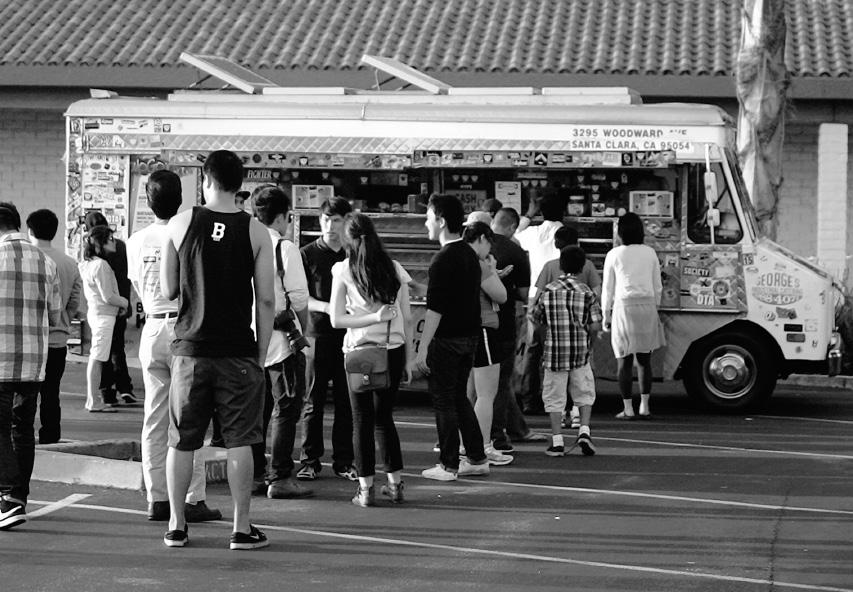
Scott Cooper, executive chef of Le Papillon in San Jose.
Becauseofthisincreasingawareness of quality, some Americans dedicate themselves to food even though they don’t work in the food industry.
Amateur“foodies”are emerging within the population. “Lots of my readers seem to be as good or better cooks than I am and to know
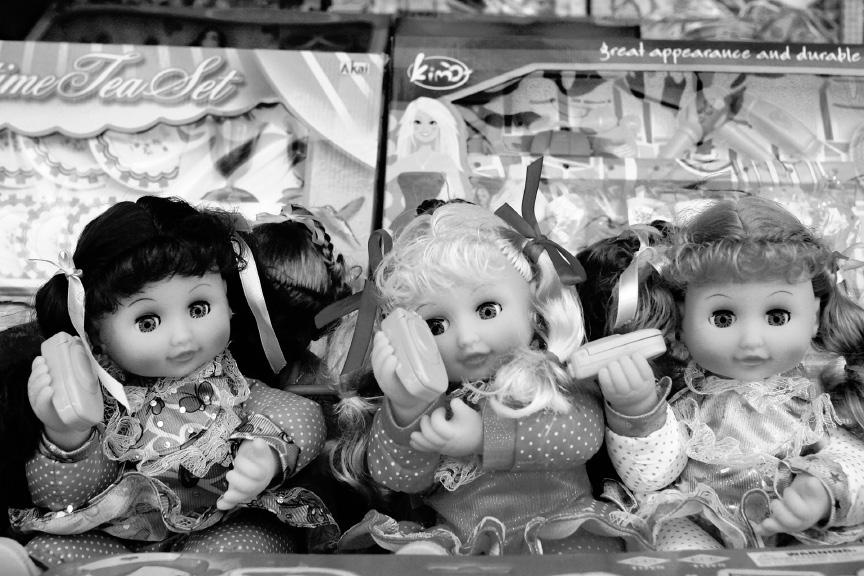
as much or more about food,” said Parsons.
In contrast, as little as nine years ago, people “put grocery shopping and cooking in the same category as laundry,” said Howard. “It became something enjoyable because of the Food Network and the celebrity chefs. Chefs are ‘rock stars.’”
The demand for greater quality
and sophistication has restaurants offering a higher-caliber menu. “You can’t stand still in the restaurant business because customers want something new, something exciting,” said Cooper.
Cooper admitted that when it came to food, he wasn’t as adventurous as he is now. “[At age] 20, I tried sushi for the first time. It was exotic,” he said. Due to less variety and lower quality foods 20 years ago, Cooper wasn’t exposed to the meals he concocts today as a critically acclaimed chef.
Ethnic and fusion restaurants are turning the attention away from the typical gourmet restaurants.“America’s food has changed because of immigration,” said Howard. “Immigrants bring their ‘food culture.’”
However, it’s not only restaurants that create unusual meals -- food trucks do, too. Ranging from Mexican-Chinese fusion to Vietnamese tacos, the possibilities with new and exciting foods is endless. Apps are available for iPhones and Droids that make it possible for people to follow the route of
the food trucks to be able to lunch on inexpensive foreign delicacies they otherwise could not buy.
“The food itself is unique. It has an explosion of flavors because it’s nontraditional,” said MoGo BBQ food truck owner Sam Pak, who drives his Korean mobile restaurant around various cities throughout the Bay Area.
As MoGo’s pulls up to a parking lot in Milpitas, people, especially high school students, are already waiting in anticipation of the Korean barbeque-filled burritos and hot dogs draped in kimchi. Before the MoGo’s cooks are even ready, a line 20-people long is formed, and once the customers receive their long-awaited food from a small blue window, they dive into their smoky tacos.
Sam Flaris of San Jose said MoGo’s is a “melting pot of different nationalities kind of shows in the food.” Other food trucks across the country are pictured this way, if only to entice customers to try new and exciting dishes.
Thoseadventurousdishesfound in food trucks are also featured online in blogs.
Blogger Terry Boyd, the creator of Blue Kitchen, a Web site dedicatedtoservingregularpeoplewith recipesandrestaurantreviews,sees his blog as a means of combining his interest in publishing with his passion for food.
Food blogs have an enormous impact on the food industry itself. “Increasingly, food bloggers are being viewed as influential food writers, expanding the number of resources for those interested in food,” said Boyd.
Because of the pervasiveness of the Internet, food producers are “rethinking how they make their products and market them,” Boyd said.
This obsession with food isn’t likely to end anytime soon.
“When I started writing about food, it was a kind of eccentricity; now it’s mainstream,”said Parsons. “I think we finally understand that food is a part of culture, and as such is extremely complex.”
Flea-market find: experience
BY CHRISTOPHE HAUBURSIN Mosaic Staff Writer
Thursdays at the San Jose Flea Market are what most regulars would call practically deserted.
It’s the kind of quiet that doesn’t leave much for the sparse number of shoppers to hear besides the rustle of dried leaves against pavement and the distant echoes of foreign-languageradiostations.The brisk morning air is paired with the occasional waft of burning incense as the sun slowly rises.
It’s just past 10 a.m. and the tent-covered booths feature items as varied as their owners’ cultural backgrounds. Near the entrance of the market on Berryessa Road, Wilson Torres, who began his career in the flea market business in 1999 after emigrating from Peru, sells assorted T-shirts and soccer apparel.
Farther down from his spot are booths sprawling with Asian goods bearing titles that sometimes get lost in translation, such as the eight-pack of “board gams.”
For Nery Clemente, a 16-yearold student at Latino College Preparatory Academy and part-time assistant at her aunt’s booth, the flea market gives her the opportunity to pursue a potential career path.
“I’m really interested in the field of business,” says Nery with a braces-induced lisp while folding clothes at one of her tables. “I’d love to pursue the area in college, and maybe even own my own shop someday.”
When her aunt steps out to visit other vendors throughout the near-empty market, it’s Nery who is left in charge of managing transactions and monitoring the mounds of assorted clothing. She stays behind, not diverting her attention from her work, not venturing away from her post, not buying anything for herself from other stations.
But in the end, it’s Nery who takes the greatest gift away from her time at the flea market.
Maturity.

FRIDAY // JUNE 24, 2011 // PAGE 15 MERCURYNEWS.COM/MOSAIC
BRIAN NGUYEN // Mosaic Staff Photographs
From left to right, Kent Ho and Erik Quiocho order food from the MoGo BBQ food truck in Milpitas.
Foodies come out to the Mervyn’s parking lot to buy KoreanMexican fusion food from the MoGo BBQ truck in Milpitas.
NEHA SIMON //Mosaic Staff Photographs
Nery Clemente folds clothes at her aunt’s stand that she takes over at San Jose’s Berryessa Flea Market.
Vendors offer items for all ages, such as these dolls above, at the Berryessa Flea Market in San Jose.
U.S. stars left legacy for American soccer
BY CHLOE TARRASCH Mosaic Staff Writer
Paul Caligiuri wasn’t the star of theU.S.nationalsoccerteamduring his 13-year tenure.
The National Hall of Fame defender scored only five goals in 110 games.
But his 1989 “shot heard ’round the world”helped the United States win a pivotal qualifier for the 1990 World Cup. The goal is significant becausetheUnitedStateshadbeen shut out of the World Cup for four decades.
Caligiurihelpedpopularizesoccer in America along with the 1994 U.S. team that advanced to the second round of the World Cup against eventual champion Brazil at Stanford Stadium.
Caligiuri, 47, and a handful of his teammates will return to Stanford on July 2 to celebrate the 1994 match he called “the best game of soccer ever played on American soil.”
The impact of the ’94 World Cup was significant in the way it affected Americans’ perception of
PHELPS // FROM PAGE 1
almostinhumanitinerary,announcing last week that he won’t attempt to repeat his eight-gold- medalwinning feat of 2008.
“He’s climbed Mount Everest,” coach Bob Bowman said. “I don’t think he needs to do it again to show he can do it.”
What he hasn’t been able to do is participate in the Opening Ceremony because the swim competition begins the morning after the festivities.
Although he still will not be able to attend the ceremony because of his racing schedule, Phelps and Bowman have decided to take a more relaxed approach to the Games. Phelps has dropped the grueling400individualmedleyand instead will experiment with the 200 backstroke.
“I know personally, one thing I would like to do and I am sure I’d like it for him is to be able to go to the Olympics where he can really enjoyitandreallyembracewhatthe Olympics are all about,” Bowman said.
Nevertheless,Phelpshasreadied himself for the rigor of another Olympics despite taking a break from swimming after the Beijing Games.
In his long road back he swam four events in Santa Clara in preparation for theWorld Championships in August in Shanghai, China. Before the Santa Clara meet, Phelps spent three weeks training at high altitude in Colorado Springs, Colo., as he regularlyhasdonethroughouthiscareer that includes 16 Olympic medals.
Chuckling, Phelps admitted that he didn’t recover as fast as his 21year-old self, but that he felt more relaxed and more comfortable in the water than he had all year.
“Bob and I can both agree that we are more relaxed than we ever have been,” Phelps said. “I don’t know if that is a good thing or a bad thing.”
Predictingwhicheventshemight try to race in London has become even more challenging since FINA,
soccer. Before 1994, few Americans followed soccer although it is one of the most-watched sports in the world. Because the World Cup was held in America in 1994, awareness of the sport grew by bounds, helping launch Major League Soccer in 1996.
“It was a sport people were getting to know,” said Marcelo Balboa, a teammate of Caligiuri who also plans to attend the Stanford reunion. “It was an opportunity for soccer to come to light in the United States.”
Caligiuri, a Southern California native, agrees.
“Soccer wasn’t really a true spectator sport, and American sports fans didn’t really look at soccer as such a widely global sport,”Caligiuri said. “Unless you played the game, followed the game, you really didn’t know much about it.”
But youth soccer had been a solid institution in America even before 1994.
“From the youth standpoint, it’s always been a sport with a lot of numbers,particularlybecauseboys and girls play,” Caligiuri said. “It’s a
sport for both genders. It’s a sport that doesn’t have any boundaries in terms of size, speed.”
Although kids played, they weren’t interested in trying to play professionally themselves, said Thomas Dooley, another member of the ’94 team.
“Kids (in America) who played soccer didn’t know national players,” Dooley said. “In other countries, kids liked soccer, but also wanted to be professional soccer players.”
However, after the ’94 World Cup, youth soccer exploded.
“We saw the importance of having to develop players at youth level,” Balboa said. “We’re learning to develop the best players in the world.”
Americans now understand that if they want to be competitive, they need a vigorous youth system.
“We realized that in order to compete with the rest of the world, we’re going to have to put more resources and more attention into developing our youth soccer players,” Caligiuri said.
The U.S. Soccer Federation built
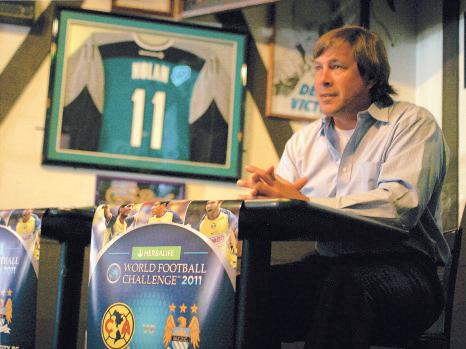
up the youth system, and with the help of MLS, developed world-class players such as Landon Donovan of the Los Angeles Galaxy.
The popularity of the U.S. national team can be attributed to the legacy of the pioneers of ’94.
“There were demands, public appearances,speakingandengagements or autograph sessions, and things of that nature where that didn’t exist before,” Caligiuri said. “So professionally, I would say it was a bigger impact off the field than on the field.”
Not only are Americans more interestedinsoccer,theyarebecom-


ing confident about their team’s prospectsontheinternationalstage.
During the 2010 World Cup in South Africa, ESPN became the channel of choice for many American viewers. The spirit of American soccer fans was contagious; it grew to the point where many began tuning in when the United States played.
“I think that the interesting evolution of the game has been not that we can compete with the rest of the world, but I think the American sports fan now believes that we should beat the rest of the world,” Caligiuri said.
He’s climbed Mount Everest. I don’t think he needs to do it again to show he can do it.”
— Coach Bob Bowman “
the worldwide governing body of swimming, banned controversial bodysuits that led to more than a 100 world-records in recent years. Phelps hasn’t changed his training approach since the ban on the suits, but says that he will have to be in even better shape as he makes a push for the London Games.
“You have to be in better shape now,” Bowman said. “Before it was like the suit almost did it for you.”
Phelps added, “Now, swimming is actually swimming.”
Without the suits, Phelps predicts a fairer competition in which he is expected to be a main competitor.
The coming Olympics might be the last for Phelps and Bowman as a team. Swimmer and coach have workedtogethersincePhelpswasa kid, but Bowman says not to expect any kind of middle-age comeback like Janet Evans.
“I told him when he decides to do that, he can just forget my phone number,” said Bowman grinning at Phelps.“I won’t be back when he’s 40.”
Perhaps because of his age or the relaxed approach to summer racing, Phelps said that he has more belief in his ability. However, he also realizes that his struggles are not over.
“We are more confident now that we were in the past, but I still think there is work to be done,” Phelps said.
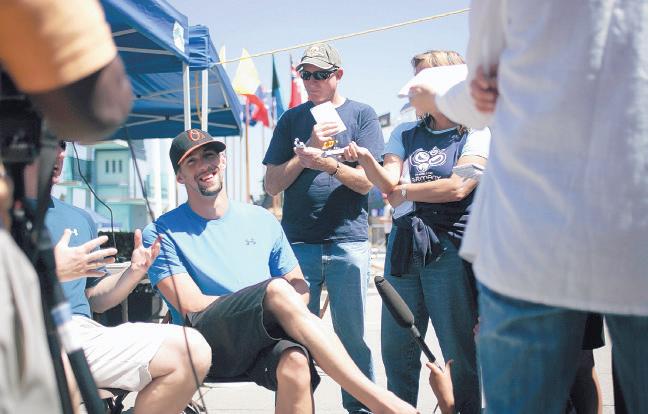
FRIDAY // JUNE 24, 2011 // PAGE 16 MERCURYNEWS.COM/MOSAIC
NEHA SIMON //Mosaic Staff Photographer Soccer hall of famer Paul Caligiuri came to San Jose to promote July 2 reunion of 1994 U.S. World Cup team.
KEVIN TSUKII // Mosaic Staff Photographs
After taking a break from the pool, Olympic star Michael Phelps returned this year to train for the London Games. His comeback included a June stop in Santa Clara.
SPORTS
Michael Phelps swims the 100-meter butterfly at the Santa Clara International Grand Prix.
Reporters and members of local media surround Michael Phelps during a press conference on the pool deck.

PRO: Climb onto this visual roller coaster
Director Martin Campbell’s film adaptation of “Green Lantern” isn’t the kind of movie that will bring you to tears or make you question the meaning of life. It won’t even please most of the fanboys demanding strict adherence to the comic storyline.
But in the end, it doesn’t need to. It’s got explosions. Aliens. Girls. Need we really ask for more from a movie about a green interstellar police squad?
Taking on a universe as intergalactically trippy as that of the big GL makes it tough to tell the background story without it sounding like a Discovery Channel documentary from outer space. Fortunately, all that crap is kept to the bare minimum.
you might want out of a more serious movie, the whole thing falls flat on its face.
But when have superhero movies ever been about great acting or the depths of human emotion?

What we’re left with is a visual roller coaster of explosive proportions that tantalizes both the mind and the senses to the brink of ecstasy.
The movie stars Ryan Reynolds as the arrogant, hotshot test pilot Hal Jordan, who, by means of extraterrestrial encounter, becomes the most badass magic ring-bearer since Frodo Baggins. His journey from irresponsibility and ignorance to fearlessness is a tired plot line, with Reynolds and Peter Sarsgaard (the big-brained villain Hector Hammond) the only two guys with acting lifejackets buoyant enough to keep them from sinking with the rest of the clichéd characters. And as soon as you start actually thinking about what
Johnsons have become an integral part of San Francisco’s Fisherman’s Wharf community.
“David’s really an anchor of the area,” said Tamaira Pratt, a waitress at Tarantino’s Restaurant for 17 years. “He was here before Hooters, before Joe’s Crab Shack. People who would come see him when they were kids come back with their own kids when they grow up. Everyone loves him.”
And on the bustling walkways of the Wharf, the Bushmen are hardly alone. The sidewalks are packed with acts ranging from a statue-imitating Indiana Jones impersonator fully coated in gold paint to a keyboardist who belts out guitar solos from his electric piano. But in the world of street performers, there are the “haves” and the “have nots” — those with roofs over their heads, and those without. For the public, perception isn’t always the reality.
The majority of the visitors along the Wharf think people like the Johnsons are homeless — an assumption founded in preconceived notions regarding the nature of their trade and, quite often, their appearance. But this group of artists is a community divided between those working to survive each day and those affluent enough to spend their days working the streets for tips.
For some of the more economically stable of the street artists, life on the job is one of contracts with local businesses and acts so characteristically associated with San Francisco culture that they’ve become celebrities.T-shirts depicting their acts line the walls of local tourist shops and, in the case of
“Green Lantern” excels, at its core, because it doesn’t get caught in the middle of striving for both cinematographic brains and brawn — it knows its strengths, and sticks with them, even if it means casting Blake Lively in the obligatory drop-dead gorgeous, brainy fighter pilot/business entrepreneur role — an eye candy combination that exists only in Hollywood and the minds of teenage boys. It doesn’t hit the acting prowess of “The Dark Knight” or the dark grit of “Watchmen,” but it sure goes all-out on the 3-D visual insanity — without absolute failure à la “Jonah Hex.”
And if superhero movies are meant to do one thing in our lives, it’s to keep our hearts racing by immersing us in worlds where anything is possible, where the good guy shows off his tricks, saves the day, and gets the girl.
“Lantern” does it all in just 105 minutes. It’s an escape. The stuff you’d want out of any other movie would’ve just been icing on the big Green Velvet cake.
“The Hulk” taught us the hard way that it isn’t easy being green. “Green Lantern” did it right.
CON: There’s no power in this ‘Green Lantern’
“In brightest day, in blackest night, no evil shall escape my sight. Let those who worship evil’s might, Beware my power … Green Lantern’s light!”
For those of us raised on comics, this oath has been imprinted in our minds. From my introduction to “Green Lantern: Rebirth” seven years ago to my tireless search of “The Sinestro Corps War” collection and sitting in the comic shop reading every new issue of “The Blackest Night/The Brightest Day” arc, I’ve gained an extensive knowledge of everything GL.
Unfortunately, my love of comics doesn’t always embrace their movie adaptations. Marvel Comics has pumped out popcorn-worthy “XMen” and “Spiderman” trilogies, but I refuse to acknowledge other adaptations such as“XMen Origins,” “Daredevil,” “The Watchmen” and “Jonah Hex.”
same woman (Blake Lively). Some of Jordan’s friends and fellow Green Lanterns are introduced early in the film but never return, leaving viewers bewildered as to why those characters are included at all.
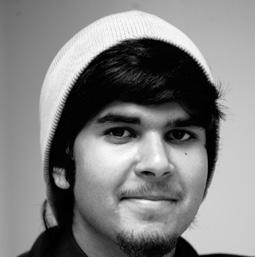
Soon to join my movie adaptation graveyard is “Green Lantern,” directed by Martin Campbell and starring Ryan Reynolds in a dual role as test pilot Hal Jordan and the titular super hero. This summer event movie misses more than it hits.
Even with strong actors such as Reynolds, Peter Sarsgaard, and Mark Strong, the acting overall lacks depth, due in part to a poorly written script. The characters, such as the villains Hector Hammond and Parallax are clichéd and underdeveloped, with none of the complexity of Detective Comic’s finest creations. For example, we never see Jordan and Hammond’s background stories, except to learn that they have conflicted relationships with their fathers and are in love with the
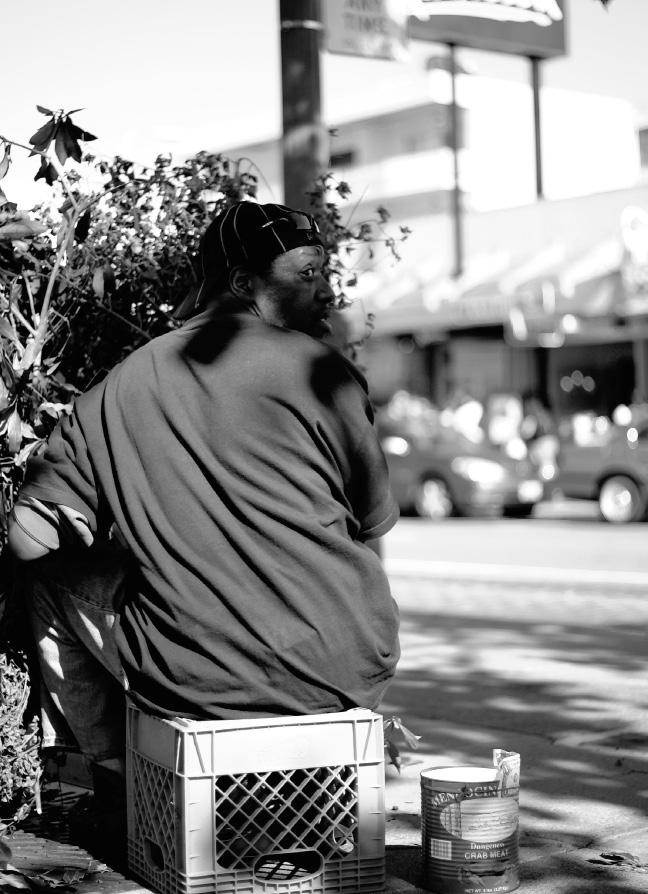
the Bushman, his own figurine is in LegoLand’s miniature recreation of Californian landmarks.
The difficulty in making the distinction is particularly evident with one of the Wharf’s best known acts, a Ghirardelli Square singerguitarist who has performed on the corner of Larkin and Beach streets for the past 40 years.
“He’s always seemed like a
homeless person to me,” said
of Santa Clara County and regular visitor of San Francisco. “When I’d give him a tip, I was skeptical about how he would use the money. It was definitely a surprise to learn that he wasn’t living on the streets.”
For true homeless performers, their daily routine isn’t quite so glamorous. Along the other side
Special effects are a staple of action, science fiction, and fantasy movies. “Green Lantern”is as visually entertaining as any other adaptation — but nothing new is brought to the table. The Green Lantern ring gives Jordan the power, through his will, to create or construct anything he can imagine. But what he comes up with in the movie is fairly lame. (Apparently, humans are dim-witted and only think about cars and war).
The Guardians of Oa are portrayed as almighty aliens that we’ve seen in countless other movies. The music is often mismatched with the emotional content of particular scenes, further confusing the viewers.
Green Lantern’s pulsating veiny suit is interesting, but it derails the story from a foundation of great comic writing. Not only is this incorrect, but so are many other aspects of the film. Even after the origin of Parallax was revealed in the “Blackest Night” arc, “Green Lantern” makes an attempt to create a new story line for the entity that embodies fear. However, the creature looks more like an intergalactic octopus with a face than the comic book’s insectoid — which indeed is terrifying.
Perhaps it’s just me being a comic book geek, but this adaptation leaves me with mixed emotions. Feeling green with envy just isn’t one of them.
of the Embarcadero are homeless artists with repertoires ranging from drumming pots and buckets to selling art made from twisted wire. They perform, however, before much smaller audiences, and their acts are often tinged with desperation and weariness.
In San Francisco alone, the number of homeless increased 50 percent from 2000 to 2009.
In Santa Clara County, where the lastest homeless count stands at 7,000, local organizations have recently joined 84 other counties in the nationwide 100,000 Homes campaign. Santa Clara County’s
Destination: Home has taken the lead in working to provide a minimum of 1,000 homes to the local homeless, and has so far garnered more than $15 million in funding.
“We work with small volunteer teams that go out early in the morningtopassout‘vulnerability’surveys in high density areas,” Loving said. “The test helps us determine which homeless are in the most need of help, based on their health conditions and how long they’ve been without a roof over their heads.”
In the midst of significant reform efforts in the area of housing the impoverished,however,theculture that surrounds the Wharf community’s street artist niche stays constant, no matter the variance of socioeconomic background.
“Honestly, I just love making people smile. I see more teeth than an orthodontist,” Larry Johnson said during a break from his act. “When people are on vacation, they’re in a totally different frame of mind. Sure, they’re scared at first, but they always laugh right after. That’s what sticks.”
And if the public thinks they’ve got just the right mix of original-
ity, skill, and character, the entertainers can become an endearing part of the community.
“I’m a native San Franciscan, and every time I walk by the Bushman, I still pretend that I don’t see him so that he can scare me each time,” Ghirardelli Square concierge Maria Anast says over the hum of the tourist hotspot’s guests and artists.
One flight of stairs below, the Ghirardelli Square guitarist, under contract with some of the Square’s businesses, strums a skewed chord, and asks for the ethnicity of a family passing by.
“Korean?” he asks.
“Yes,” they reply, “Korean.” He claims to have traveled the world in his early days, but whether that’s true, no one really knows. Either way, he’s become good at mimicking languages.
And just like that, he picks up a tune in suprisingly convincing Korean, and sings it with a throaty rasp over the twang of his roughed-up guitar. The children recognize the verse. They laugh and sing along — and as their parents drop a few dollars into his frayed guitar case, he tips his faded brown hat and utters one of his many characteristic rhymes.
“Come on, why don’t you give me some mo’ ‘cause I sure am po’.”
Some audience members buy the illusion, others don’t, but either way, over the years, the act has stayed the same.
“These guys are steadfast,” Anast says. “Most performers around here just do their music and sell their stuff — but it’s the memorable ones that do something more. They become part of the city.”
Saif Adeeb, a resident
FRIDAY // JUNE 24, 2011 // PAGE 17 MERCURYNEWS.COM/MOSAIC
PERFORMERS // FROM PAGE 1
MOVIE REVIEW
KEVIN TSUKII //Mosaic Staff Photographer Street-performer Larry Johnson, aka the “Bushman” sits on a sidewalk in San Francisco, waiting for pedestrians to scare.
PHOTO COURTESY OF WARNER BROS. PICTURES. TM & © DC COMICS
Ryan Reynolds as Green Lantern in Warner Bros. Pictures’ action adventure “Green Lantern.”
Imran Najam IN MY OPINION
Christophe Haubursin IN MY OPINION
Local music scene thrives in San Jose
Underground musicians make music with personal significance
BY JOSE DIAZ Mosaic Staff Writer
It’s a cool evening outside when 12-year-old Esperanza Garnica walks on stage. Short in height and sporting long brown hair, she eagerly carries an acoustic guitar.
She’s ready to play at an open mic night at Poor House Bistro in San Jose, where no one knows her outside a half-dozen family members on hand for support.
Garnica sings and strums popular covers, as well as a song she wrote herself. Despite her young age, Garnica is no different than other local singers at the open mic night, most of whom perform for the love of music and none of whom have a recording contract.
“I want to express problems teenage girls go through -- relationships, just problems through daily life,” the aspiring San Joseborn country musician said.
The world of independent, upand-coming, unknown local and underground musicians is alive and well in San Jose. Artists like Garnica attend open mic events like the one held weekly at Poor House Bistro, and the San Jose State University campus radio station plays music by local artists.
At the open mic night, musicians sang songs that reflected what matters to them. Even if they don’t achieve commercial success, the music these artists produce contains personal stories and represents true values, and it’s performed without widespread recognition.
Not many people know local artists like Garnica -- artists who each have something to bring to life with their music.
At that same open mic night where Garnica played, other musicians played music straight from the heart. That included flutist Sam Barth and jazz singer John Korbel.
Barth, 62, has a fascination with various kinds of flutes. He performed a few melodious songs, setting up a distinctive performance.
He said he has played the flute for the past 30 to 40 years. For a long time, performing the flute was his main source of income. But it hasn’t always been profitable.
“I used to tell people I’ve made over $10,000 playing music — but it took 5 or 10 years to do it,” Barth said with a chuckle.
Barth’s gigs range from playing at clubs, weddings, and parties, as well as sitting in with other bands. He is a self-taught musician and plays a lot of his songs by ear.
Occasionally, he lives in his car if he’s low on cash, but he still keeps playing for the love of it.
“People always say, ‘Do what you love.’ You can’t be counting on material wealth or big pay or big recognition — if you love playing music, do it for the love of playing music,” Barth said.
Korbel, 56, is a singer, guitarist andsongwriterwhogenerallyplays a mix of jazz, pop, country and folk.
An Orlando, Fla., native,
Korbel travels doing marketing and sales for a living. He makes sure to bring his guitar along to play at shows.
At the open mic night, Korbel sang with a soulful vocal style. His raspy, loud voice blended seamlessly with the romantic themes of his songs.
Korbel feels that music nowadays lacks deep messages that give songs genuine sentiment.
“There’s a lot less of that internal life that artists express,” he said, compared to when he was first getting into the music scene.
Korbel said that these days, mainstream music has relied on computer technology and gimmicks. This contrasts with the instrumental music that openmic=night musicians are working with.
Technology has replaced instruments in some cases, leading to breakthroughs in the creative approach of new artists and making the process more accessible to those who don’t play instruments.
Korbel said he has mixed feelings about computer-generated music.
Barth said it can also constitute an effortless way for anyone to generate sounds that take away from the human quality of a song.
“It can be grossly commercial, where there’s an artificial realm that takes the humanity out of it,” Barth said about computer-generated music.
The effort and work involved with composing music, regardless of whether there are lyrics or definitive messages, requires artistry.
However, a song can both sound great and say something that speaks to peoples’ thoughts.
“The best songs are about what happens in your life,” Garnica said. “It has to come from yourself.”
Songs that resonate personally with the listener make a bigger impact, Barth said.
“It’s a personal thing for a lot of people. Some things will grab one person and others will attract someone else,” said Barth.
While organic, self-produced, acoustic music is favored by the Poor House Bistro musicians, other local musicians aim to create genuine emotion through modern techniques. Local DJs such as Heather Jenson and Nataraj Das of 90.5 FM KSJS, the San Jose State University campus station, promote San Jose-based electronic and hip-hop musicians.
KSJS plays music by local, underground and up-and-coming musicians exclusively. It serves as one of the ways these anonymous artists can have recognition and gain listeners.
Jenson said some of the electronic-produced music, such as dance, down tempo, industrial, new wave or drum & bass, can be filled with genuine emotion. Even without direct vocals, a song constructed with only beats and rhythms has a powerful effect that
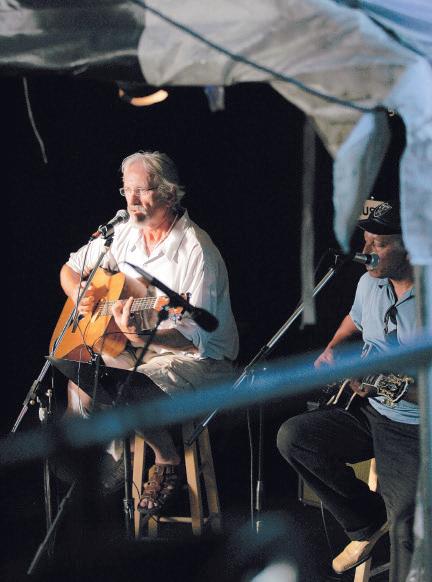

drives you to feel something is still there.
To Jenson, the removal of vocals may prompt an even greater sentimental sensation for a listener.
If the DJs are “building you up and then they drop you, You don’t need vocals to go on a ride,” Jenson said.
Rap and hip-hop music expresses a multitude of significant issues that can range from gangs,
Style Evolution
BY STEVE VU Mosaic Staff Writer
In a generation that revolves around fast-paced development, it’s not surprising to see fashion and styles evolve. Clothes are a gateway for today’s youth to express themselves. They also represent culture, music, and lifestyle as well as the expansion of ethnic diversity.
For Clifford Murray, 22, an employee at the taste-making San Francisco boutique Fully Laced, the current style is summed up in one word: swag.
“A misconception is that swag is based on what you wear,” Murray said. ”It’s deeper than the clothes.”
Swag, a slang word for style, also involves attitude, according to Murray. When asked where he found inspiration to dress up, Murray said, “Music and media, specifically mainstream hip-hop, R&B, and underground hip-hop.” Wide-ranging musical interests alone do not impact the concept of clothes representing diversity. City environments can be a factor. San Francisco is home to many neighborhoods that have their own unique style. Those regional differences can further the diversity, said Fully Laced manager Jon Baretto. “San Francisco culture is so
to abuse, to poverty or drugs.
Although Das, urban music DJ for KSJS, prefers rap music that delivers a message, he said people would rather hear something that’s more ear candy than deep and thought-provoking.
“The truth is, they just want to listen to something that sounds good,” Das said. Since rappers and hip-hop artists with a record label have less freedom than that of underground
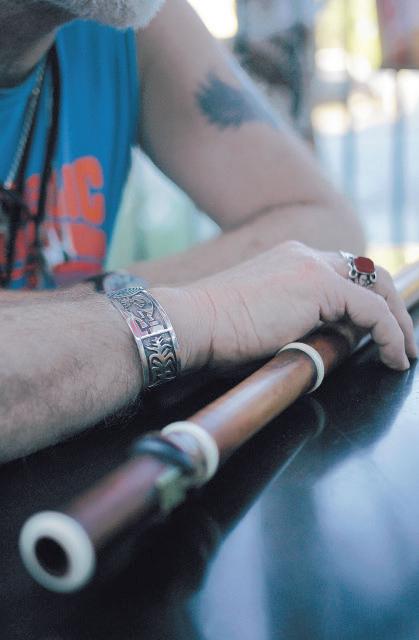
and up-and-coming musicians, Das said they don’t have complete control over which issues they can sing about.
“A lot of underground, upand-coming artists -- local artists — they’re writing music that tells about stuff they really care about,” Das said. “They have control of the distribution of their songs, they have full control. Once you’re signed by a huge label, you don’t have that control.”
Gen Y finds expression in changing fashions
eclectic. It’s hard to pinpoint exactly what is SF culture. It’s different for everyone,” Baretto said. Fashion outside the region can also inspire local style.
The Bay Area’s heavy Asian populace has influenced the region’s styles, taking cues from across the Pacific Ocean.
“Japan is still a big influence in American street wear,” Baretto said, “And the funny thing is that it’s also vice versa.”
The cultural diversity influences not only consumers, but also designers, according to Benson Chou, lead designer of the Imaginary Zebra clothing based in Davis, California.
The Imaginary Zebra agency designs graphic art that is printed on T-shirts and sweaters.
Chou said a person’s fashion sense is a direct reflection of their personality. “Fashion’s an outlet to identify ourselves -- wearing slippers, shorts, baggy jeans, skinny jeans, suits, button ups, or T-shirts -- are all indication of who you are, whether you like it or not,” Chou said. “It’s our choice to choose what to wear, so it certainly indicates the diversity of our choices and representation of our generation.”
The diversity can result in style mashups. One trend is the combi-
nation of street culture and haute couture.
“Street fashion has a lot of crossover with couture, and it’s more accessible to the mainstream market. There are few rules and more options,” Baretto said.
While fashion helps reflect Generation Y’s cultural diversity, it’s not the end. It is simply a fingerprint of this generation.
“People are still rather conservative in terms of fashion -- it’s been a similar medium across the board,” Chou said. “However, we aregraduallybecomingmoreinnovative,embracingthemix-matching of existing styles and coming up with new ones to set trends.”
FRIDAY // JUNE 24, 2011 // PAGE 18 MERCURYNEWS.COM/MOSAIC
NEHA SIMON // Mosaic Staff Photographs
Don Robinson and Tony Simon play the blues accompanied with bass and acoustic guitars and vocals at Open Mic night at Poor House Bistro in San Jose.
Esperanza Garnica performs a Bruno Mars cover at Open Mic night.
Sam Barth plays the wooden flute at Open Mic night.
Community rallies to fight gang violence
Meetings designed to provide tools for keeping kids safe
BY JANE JUN Mosaic Staff Writer
With large brown eyes and a playful smile, 8-year-old Lexii Herrerabouncedonherseatamongthe rows of wooden chairs in the San Jose City Hall council chambers.
She was happy and safe. And she’ll stay that way if her mother, Deborah Herrera, has anything to say about it.
Herrera, a mother of eight, drove from her Morgan Hill home on June 14 to attend a community forum on gang prevention and awareness hosted by the Dr. Martin Luther King Jr. Association of the Santa Clara Valley. The association scheduled the meeting for early summer, when students are fresh out of school and gangs are looking for new recruits.
Herrera said she has nephews who like to be “around drugs, alcohol and gangbanging”and she wanted to ensure that all of her children have a gang-free future.
“My nephews rap about gangs as if it is something glorious,’’she said. “Gangs have become something like an idol to them.”
At the meeting, police, city and community officials rallied people to action, inspiring them to take charge in their communities by joininggang-preventionprograms and taking more interest in their children’s lives.
San Jose police officials emphasized the importance of reporting any suspicious incidents that hint at gang activity. Children were told to avoid areas where there is gang graffiti and where groups of people are dressed in gang colors.
Parents also were encouraged to look for signs of gang activity among their kids, such as changes in dress, attitude or if they take on new monikers. They were also told to “not be intimidated by your
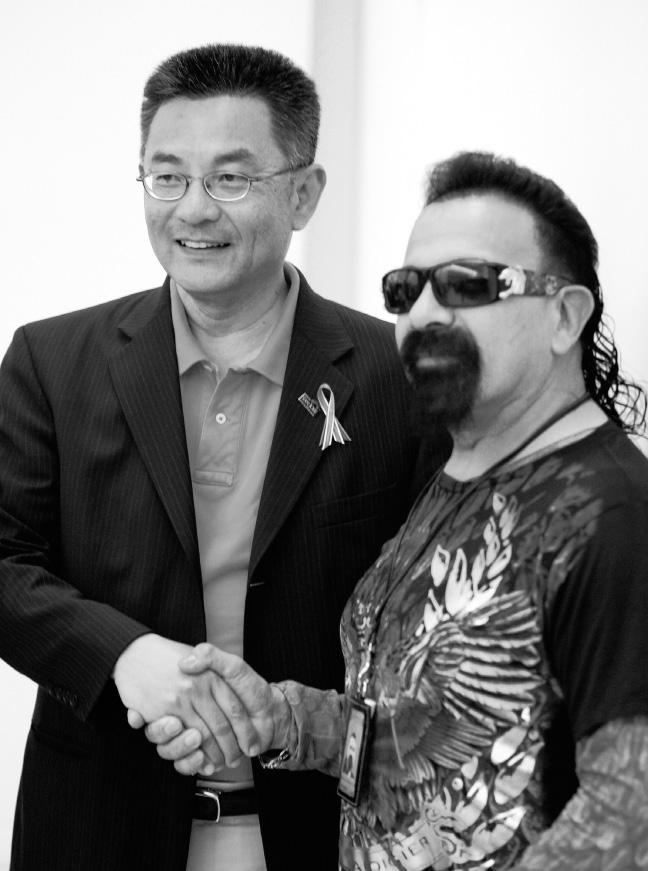
children”and to enforce household rules and reach out to both their childrenandotherteenagersintheir neighborhood.
“You all gotta act now,” said keynote speaker Pastor Sonny Lara of the Firehouse Community Development Corp. in San Jose.
“When I go to a funeral of a kid gang member, I point to everyone sitting in the audience and say,‘You all should’ve been in this kid’s life while he was alive. Not when he is dead.’ ”
The forum is one in a series of 12 programs, each aimed at a different social issue of concern to the community. The next forum, scheduled for June 29, will focus on the use and dangers of illegal fireworks.
Gang violence is on the rise in San Jose. There were 11 gang-related homicides during the first six months of 2011, compared with six in 2010, according to Mario Maciel, superintendent of the Mayor’s Gang Prevention Task Force. Victims and participants of gang activityarepredominatelybetween the ages of 14 and 19, said Maciel. In 2010, 58 percent of victims and
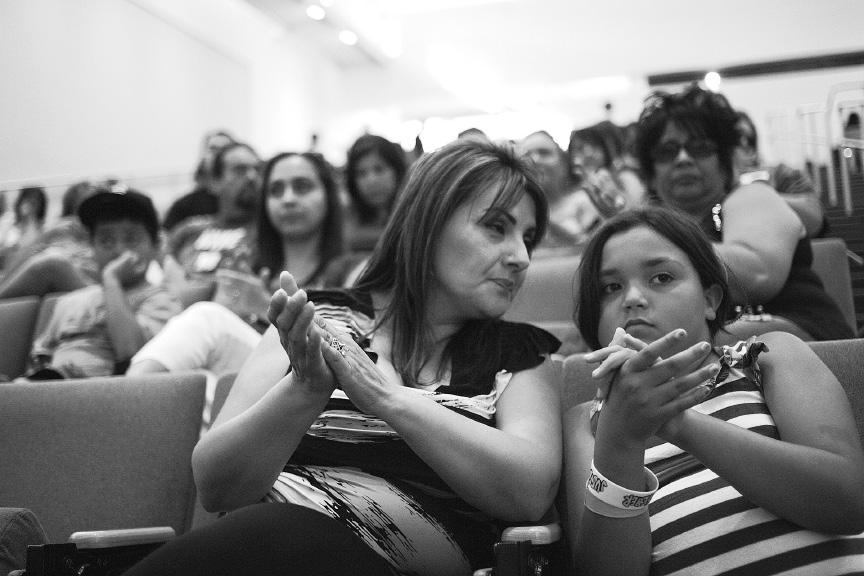
58 percent of perpetrators were 19 years old or younger and 52 percent of female offenders of gang crimes were 17 years old and younger.
The audience, which nearly filled the large council chambers, included children. Parents were encouragedtobringthembecause the influence of gangs is reaching an even younger age group.
“Gangs are now recruiting younger and younger students, as young as second-graders. It is important to raise awareness to a wide range of people, from all demographics over the county,” said Kathleen Flynn, vice president of the Dr. Martin Luther King Jr. Association.
“I know of some pretty young kids in the streets whose goal is to get into prison in order to get as high as they can with the prison gangs,” said community member Priscilla Rubio, 26. “Eight to 10-year-olds are already starting to get interested in gangs, thinking
gangs are manly and something to look up to.”
Rubio also said that in some cases, it is the parents who groom their children to join gangs, and gangs have become a kind of culture or tradition that the children inherit.
There have also been cases of elementaryschoolstudentsrefusing to use crayons that are the colors of rival gangs and the younger brothers and sisters of gang members being pressured to join gangs, Maciel said.
In an effort to curb the escalating gang activity in San Jose, school districts and police department officials have established the Safe School Campus Initiative, which intervenes in cases of gang activity on campusandprovidesassessments, presentations, and referrals for the safety of youth and their families.
The Mayor’s Gang Prevention Task Force also has created the Community Crisis Response Protocol, which provides a detailed
Mother’s poem expresses deep message about bike safety
BY ALYSSA MATSUHARA Mosaic Staff Writer
Fifty years ago, Janice Gamper was a typical 11-year-old riding her bike without a helmet when an accident dramatically changed her life.
Now 61, Gamper wants to help prevent others from experiencing the same fate by promoting the use of bicycle helmets.
“I want to tell my story,” said Gamper, who suffered permanent brain damage from the crash. “I want to make people aware.”
Gamper has been motivated to get the word out since the death of her father last year.
Up until his death, George Gamperhadpushedhisdaughterto share a heartfelt poem her mother wrote in 1986 about the accident.
On a recent evening at her Saratoga home, Gamper, with poem in hand, described the toll the injuries took on her and her family’s life.
It was 1961 – an era where few put much emphasis on bike safety. Gamper rode her bike to a friend’s house, across the street from a childhood crush.
Racing home after being humiliated in front of the boy, Gamper’s bicycle pedal caught onto a leftover post from a construction project. She flew over the handlebars and smacked the pavement.
Her sister, Marilyn, thought it was just a tumble when she found Gamper lying on the ground. Only until she saw Gamper’s eyes, did the girl realize how serious it was.
“After I got home, I guess I was acting peculiar,” Gamper recalled. “I was throwing up.” Her mother, Lavina Gamper, called O’Connor Hospital in San Jose for help.
“The doctor said it was an easy procedure; they were just go -
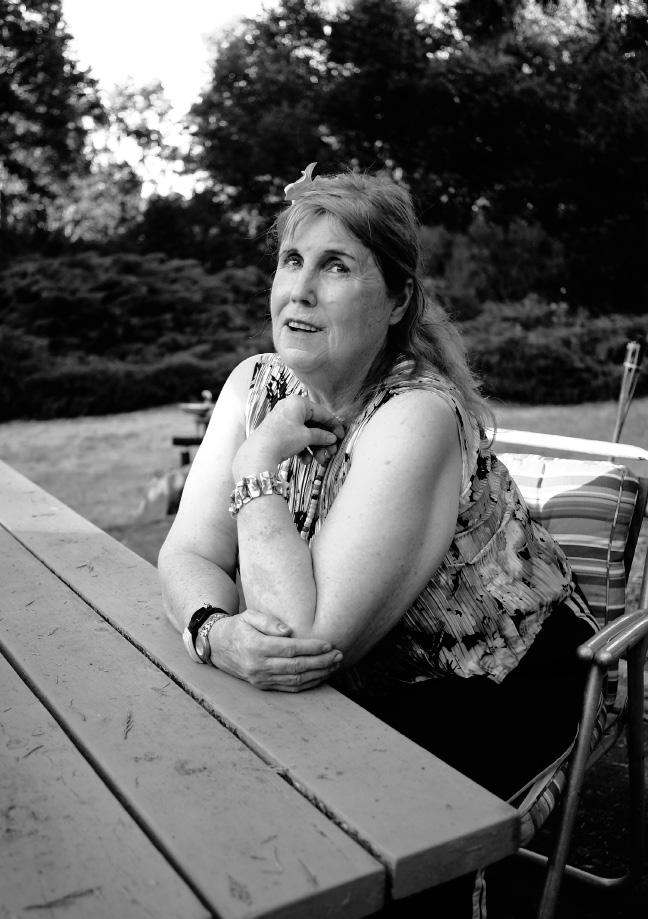
ing to remove a blood clot,” said Gamper, pointing to her right temple. “But 10 days later there was another blood clot.”
After the second procedure, Gamper said it was determined she had permanent brain damage. Gamper, who experienced blackouts, received shock treatments.
Doctors had deemed her “a hopeless case.” She said friends and teachers abandoned her. Her two stepsisters distanced themselves from her.
“It hurt,” Gamper said.
Her mother refused to accept that Gamper would never fully recover. She took her to doctors, surgeons, biochemists and nutritionists — even a psychic.
“I had the best mother,” Gamper said. “She wasn’t about to give up on me – she called me her miracle daughter.”
At 15, Gamper was sent to the former Agnews Insane Asylum for
exhibiting violent behavior. She remained there for 4½ years.
During that time, her mother, an avid writer and songwriter, wrote the poem.
“Don’t you know what a helmet can do?” Gamper recited. “It can make a much, much better life for you!”
Gamper knows it by heart.
Three years ago, Gamper tried to get Saratoga City Council members to raise awareness of bike safety by holding a citywide “Helmet Day.”
“I just wanted $100 to $250 to make flyers, brochures and posters to remind people to always wear your helmet,” Gamper said. “But they said they couldn’t afford it.”
After the deaths of her parents, Gamper turned to her faith for support, attending three churches: Golden Altar Ministries World Outreach Church, Genesis Upper Room – Women of Zion and Cathedral of Faith.
“I love her as a pastor,” Golden Altars Ministries Pastor Calvin Cook said. “I’ve seen her journey from A to B and it’s an amazing thing.”
Gamper has turned her situation into an opportunity to educate people and to strengthen her faith.
“I am grateful for my accident, and although it has been a rough and tough life, I wouldn’t change anything because it has drawn me closer to Jesus,” Gamper said. It also has drawn her to advocate for bike safety.
“I see kids and even adults riding a bike without a helmet and it crushes my heart – I cringe inside,”Gamper said, placing a hand over her heart and then pointing to her head.
“If you lose this, you’ve lost it all.”
response procedure the task force, the San Jose City Council and police can take following a critical gang incident.
A collective group of interventionteamscalledtheCitywideCrisis Intervention Team has mobile outreach capacity, which allows them to respond to violence effectively. One of the team’s criteria is targeting gang-related homicides and other cases of extreme violence.
Atthemeeting,speakersencouraged parents to support and educatetheirchildren,pointingoutthat adolescentswhogrowupwithouta parental figure in their lives look to gangs for the acceptance and guidance they cannot find within their own families.
“I see parents at school meetings rolling their eyes, as if they already know their kids will fail. You gotta start telling your kids that they’ll go further,” said Lara.
“You gotta start telling them that your ceiling is their floor.”
Where Is Your Helmet?
BY LAVINA GAMPER
Now …. Here’s a story I pray you read it through
For, no one would ever want this to happen to you.
Our daughter, she went for a ride on her bike.
Now, on her way home, This you won’t like. Her bicycle pedal caught on to a post.
Over the handlebars she went
Landing her head on blacktop cement
Off into the hospital, one month she spent
Given brain surgeries twice.
No helmets in those days.
Wasn’t that nice?
After two months when we thought all was well.
Super human strength, unmanageable, and violent
Off into a Mental Ward 5 years she spent
Because of bad behavior, in isolation 50 percent.
Where is your helmet?
Where is your helmet?
Don’t you know what a helmet can do?
It can make a much, MUCH better life for you!
Our story’s very unbelievable, but true.
I pray every biker reads this. NOT just a few!
Where is your helmet?
Where is your helmet?
FRIDAY // JUNE 24, 2011 // PAGE 19 MERCURYNEWS.COM/MOSAIC
—COURTESY OF JANICE GAMPER
KRYSTAL JARA //Mosaic Staff Photograph Janice Gamper, outside her Saratoga home.
KEVIN TSUKII //Mosaic Staff Photographs Lexii Herrera attends the Martin Luther King Foundation’s meeting on gang violence with her mother at San Jose City Hall.
San Jose city councilman Kansen Chu and Pastor Sonny pose for a photo.

Fast track to victory
STORY by LAURA COSGROVE Mosaic Staff Writer
PHOTOGRAPHS by BRIAN NGUYEN Mosaic Staff Photographer
The sun was scorching June 18 at the Hellyer Park Velodrome in San Jose as Lorraine Jarvis raced time trials at the Festival of Speed.
The 51-year-old Jarvis didn’t seem to mind the heat. She is used to riding through the burn.
After all, unlike most two-time world champions, Jarvis began her sport only six years before she took her first title in 2009.
“I tried it in 2003, and since then, I’ve loved it,” Jarvis said. “Track racing is a great sport, and because I have to stay fit for it, it keeps me out of trouble.”
Watching the remarkably down-to-earth Jarvis give friendly advice to beginning cyclists and cheer her husband as he raced, one might not suspect that two years ago, she herself sped around an Australian oval to take the World Masters Championship title in the 500-meter track-cycling event. Last year in Portugal, she did it again.
Track cyclists race fixed-gear bicycles around a banked concrete speedway called a velodrome.
Before 2003, Jarvis played competitive beach volleyball for 10 years as well as the six-person indoor game through the U.S. Volleyball Association. The weekly tournaments took up much of her time, she said.
Soon after she stopped playing volleyball at 38, she stumbled across a new niche.
Through her track biking husband, Kelly Silberberg, three women recruited Jarvis for their team cycling event. They needed another racer.
“I enjoy the sport. There’s camaraderie and good sportsmanship among all the cyclists,” she said.
But the ultimate inspiration for Jarvis’ success came in 2008 when she spotted the first faint glimmer of her trophy-winning future.
“When I was 49, I saw a woman who turned 50 break the world record for the 500-meter race” Jarvis said. “I thought to myself, well, I can do that.”
With the help of Silberberg, who is also her coach, Jarvis began training. She worked out at a gym, biked 23 miles from her home in Marin County to work in the San Francisco Financial District, and came to the San Jose velodrome Sunday mornings to train.
It paid off.
Racers compete in five-year age increments, Jarvis said. She was 50 years old in her first world race winnng the 500 title in the 50-55 age group. “My time was 39.4 seconds at the Australia meet, my fastest yet,” Jarvis said.
Jarvis plans to skip the World Masters race this year, but aims to win the National Masters in the 500.
She is also competing in the Masters National Para-cycling tandem track event with a blind woman who contacted her for help.
“She needs a pilot — a guide,” Jarvis said. “It’s going to be a challenge because the distance is a bit longer than what I’m good at, but I’m training for it.”
Jarvis does not regret sacrificing time and sweat to succeed in track cycling.
“I guess I could’ve done gardening or something,” she said with a laugh. “Although my dogs must miss me when I’m training.”
All Marin woman needed was six years to become a track-cycling champion
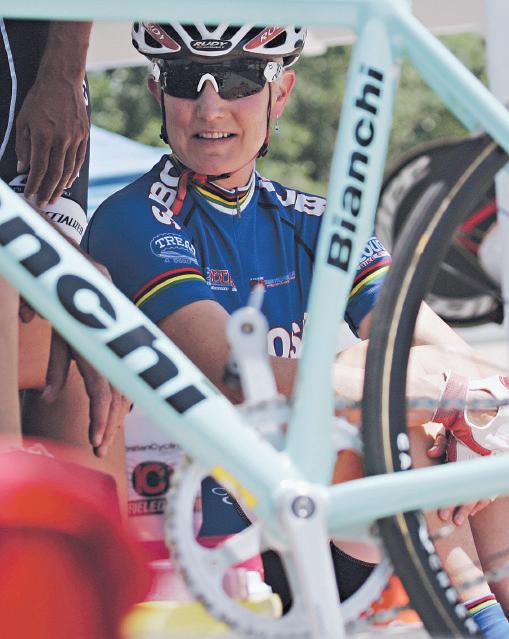

FRIDAY // JUNE 24, 2011 // PAGE 20 MERCURYNEWS.COM/MOSAIC
SPORTS PROFILE
ABOVE: “I thought to myself, ‘Well, I can do that,” Marin’s Jarvis says.
LEFT: Jarvis, 51, had all the tools to become a two-time masters world champion.
Lorraine Jarvis is a blur as she powers through 200-meter track cycling race in San Jose.



 FRIDAY // JUNE 24, 2011
HIGH SCHOOL URBAN JOURNALISM WORKSHOP MOSAICSANJOSE.TUMBLR.COM
KEVIN TSUKII // Mosaic Staff Photographer Michael Phelps swims the 100-meter butterfly at the Santa Clara International Grand Prix on June 17 in Santa Clara.
KEVIN TSUKII // Mosaic Staff Photographer Street-performer Larry Johnson waits on San Francisco sidewalk.
FRIDAY // JUNE 24, 2011
HIGH SCHOOL URBAN JOURNALISM WORKSHOP MOSAICSANJOSE.TUMBLR.COM
KEVIN TSUKII // Mosaic Staff Photographer Michael Phelps swims the 100-meter butterfly at the Santa Clara International Grand Prix on June 17 in Santa Clara.
KEVIN TSUKII // Mosaic Staff Photographer Street-performer Larry Johnson waits on San Francisco sidewalk.





 - STEVE
- STEVE







 - KIMBERLY IBANEZ
- KIMBERLY IBANEZ













 BY IMRAN NAJAM Mosaic Staff Writer
BY IMRAN NAJAM Mosaic Staff Writer















































